Forums
- Forums
- Axis And Allies Forum
- General Discussion
- Aviation News
Aviation News
Post a reply
- Go to Next topic
- Go to Welcome
- Go to Introduce Yourself
- Go to General Discussion
- Go to Screenshots, Images and Videos
- Go to Off topic
- Go to Works in Progress
- Go to Skinning Tips / Tutorials
- Go to Skin Requests
- Go to IJAAF Library
- Go to Luftwaffe Library
- Go to RAF Library
- Go to USAAF / USN Library
- Go to Misc Library
- Go to The Ops Room
- Go to Made in Germany
- Go to Campaigns and Missions
- Go to Works in Progress
- Go to Juri's Air-Raid Shelter
- Go to Campaigns and Missions
- Go to Works in Progress
- Go to Skinpacks
- Go to External Projects Discussion
- Go to Books & Resources
-
8 years agoFri Oct 28 2016, 09:49pm
 Main AdminA HC-130 Combat King II assigned to the 102nd Rescue Squadron lands on a dirt landing strip at Fort Polk, La., during Southern Strike 17, Oct. 27, 2016. SSTK 17 is a total force, multi-service training exercise hosted by the Mississippi Air National Guard?s Combat Readiness Training Center in Gulfport, Miss., from Oct. 24 through Nov. 4, 2016. The exercise emphasizes air-to-air, air-to-ground and special operations forces training opportunities. These events are integrated into demanding hostile and asymmetric scenarios with actions from specialized ground forces and combat and mobility air forces. (U.S. Air Force photo by Senior Airman Trevor T. McBride)
Main AdminA HC-130 Combat King II assigned to the 102nd Rescue Squadron lands on a dirt landing strip at Fort Polk, La., during Southern Strike 17, Oct. 27, 2016. SSTK 17 is a total force, multi-service training exercise hosted by the Mississippi Air National Guard?s Combat Readiness Training Center in Gulfport, Miss., from Oct. 24 through Nov. 4, 2016. The exercise emphasizes air-to-air, air-to-ground and special operations forces training opportunities. These events are integrated into demanding hostile and asymmetric scenarios with actions from specialized ground forces and combat and mobility air forces. (U.S. Air Force photo by Senior Airman Trevor T. McBride)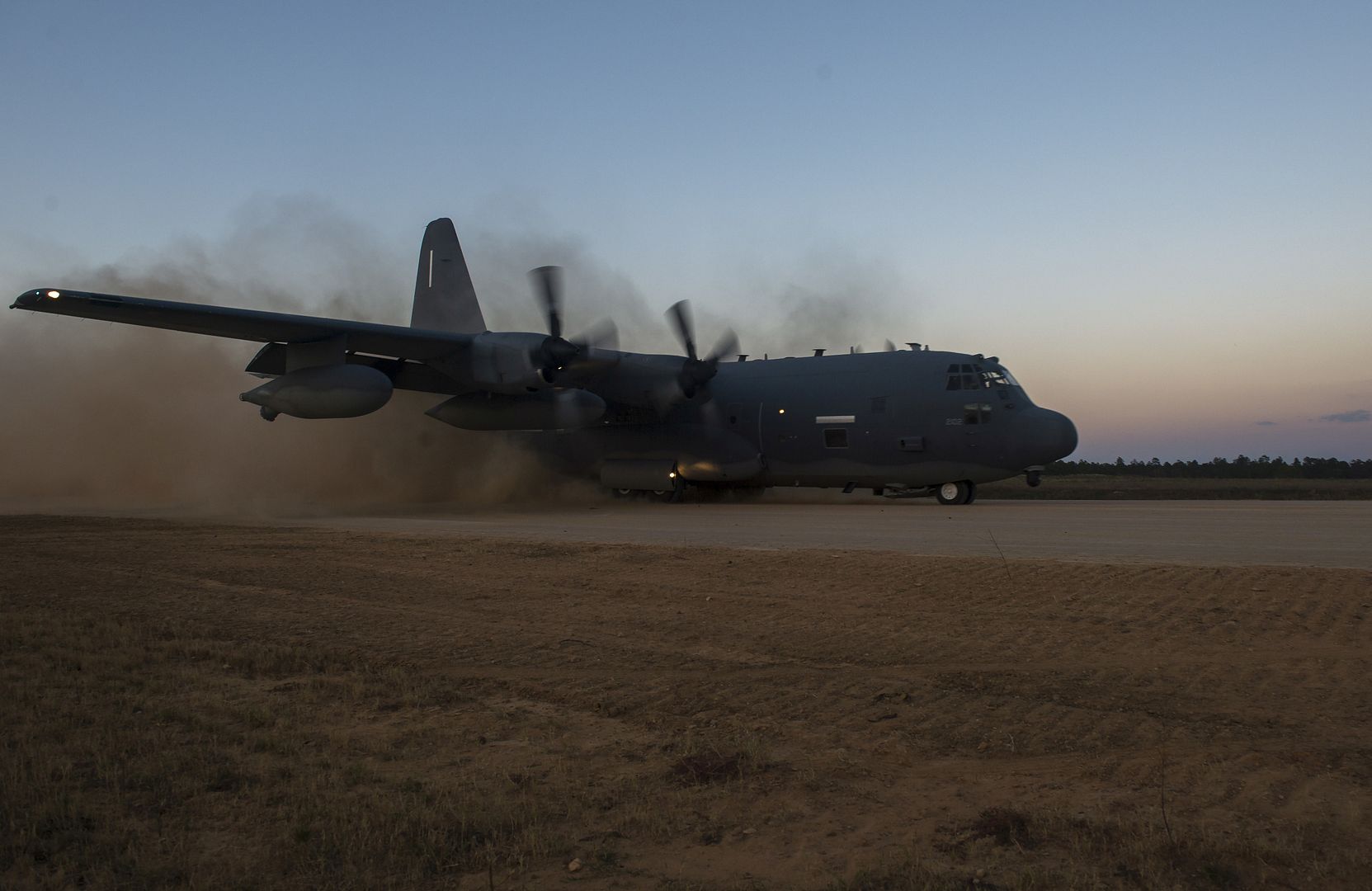
HILL AIR FORCE BASE, Utah -- The QF-4 Aerial Target mission is winding down and two of the aircraft visited here Oct. 25 so that those who have supported F-4 Phantom IIs over the years could see them one last time.
The visit?touted as the ?Phinal Phantom Phlight??was hosted by the Air Force Life Cycle Management Center, F/QF-4 System Program Office here. Events included a flyby, luncheon, and static display.
Holloman AFB, New Mexico, pilots Lt. Col. Ron King, 82nd Aerial Targets Squadron, Detachment 1 commander, and Jim Harkins performed two flybys, then landed here at noon and taxied toward base operations where they were greeted by Airmen and civilians.
?I felt like we had an opportunity and an obligation to get this aircraft on the road one more time because so many people have this connection with it,? said King during luncheon remarks. ?It?s just been absolutely amazing for me to do this.?
QF-4s are basic F-4s reconfigured for unmanned flight and used in Full-Scale Aerial Target missions.
The FSAT mission is to provide aerial targets for all Defense Department weapon systems. When flown in threat representative configuration, QF-4s were oftentimes shot at and destroyed during Live Fire Test & Evaluation missions and Air Combat Command?s Weapon System Evaluation Program.
The QF-4 program, which stood up in the 1990s after the 309th Aerospace Maintenance and Regeneration Group at Davis-Monthan AFB, Arizona, began regenerating F-4s, is now in the ?Sundown? phase of its lifecycle. In May 2015, all remaining QF-4s were transferred to Holloman AFB for final operations. The last unmanned mission in a threat representative configuration was flown Aug. 17, 2016, and unmanned operations ended in September. The last manned QF-4 flight is planned for Dec. 21.
During the program?s lifecycle, it was not unusual for these ?unmanned? aircraft to be flown by pilots.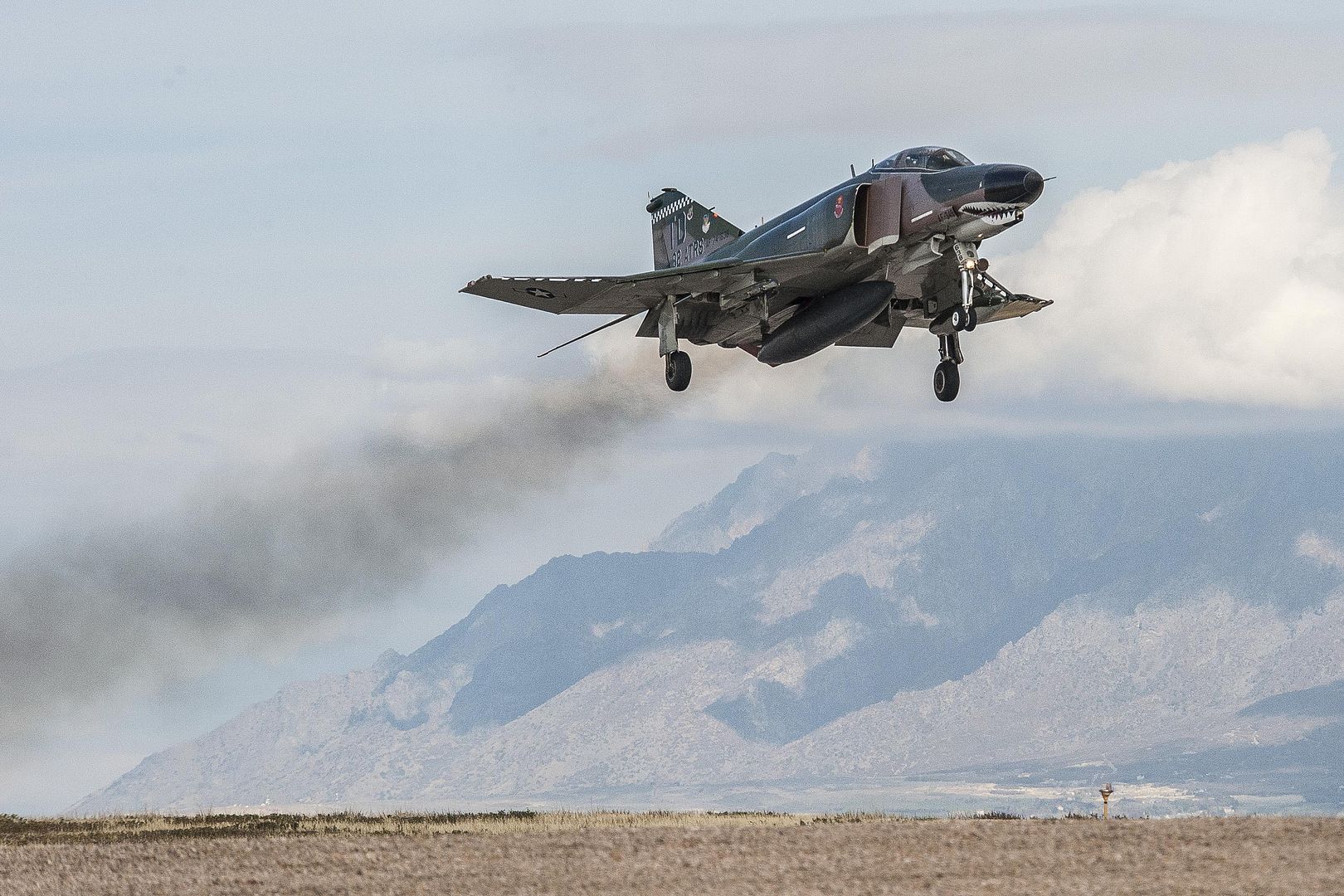
?Ironically, the majority of QF-4 missions are flown in the manned configuration to support manned presentations (validation tests of non-lethal weapon system components), unmanned flight chase missions, and pilot proficiency training,? said Scott Johnson, Air Force Life Cycle Management Center F-4 system program manager. ?QF-4s also participate in the Heritage Flight Foundation?s effort to share air power history with the public.?
Johnson also noted that before becoming operational, each QF-4 had to be checked out with a human inside.
?One of the checks was to fly the aircraft with a pilot in the cockpit while it was controlled from the ground station in what?s called a ?manned-coupled mission,?? he said. ?It then became part of the local QF-4 fleet and remained in a manned configuration until it was needed for an unmanned flight to support an FSAT mission.?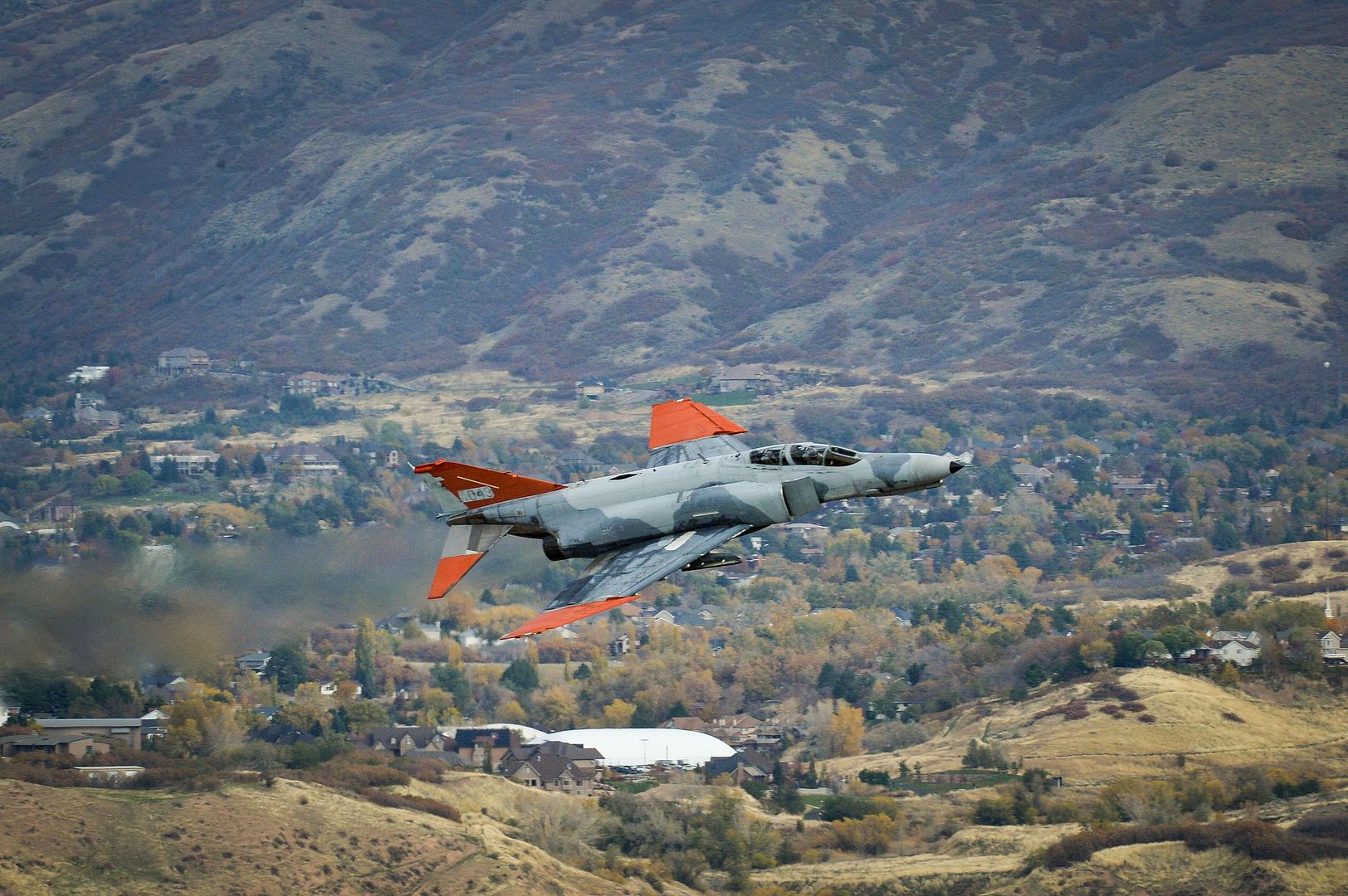
The end of the QF-4 mission does not mean the AFLCMC F/QF-4 System Program Office here will stand down. Besides the F/QF-4 program, the office also has System Program Management responsibility for 12 other Mission Design Series Proven Aircraft (retired U.S. Air Force aircraft acquired and operated by other agencies and countries to include NASA and 44 Foreign Military Sales customers around the world) such as the F-4, F-5, A-37, T-37, B-57, C-47, OV-10, and O-2, to name a few.
?It has been the privilege and honor for the men and women of the Proven Aircraft SPO to be a part of the F-4 Phantom II?s long and glorious history,? said Johnson. ?The success of the QF 4 FSAT program has been the result of a great team working toward a common goal for the better part of 20 years.?
The current fleet of QF-4s at Holloman AFB consists of 13 aircraft. At the end of the program, those still remaining will have their engines and hazardous materials removed and be towed to the White Sands Missile Range for use as ground targets.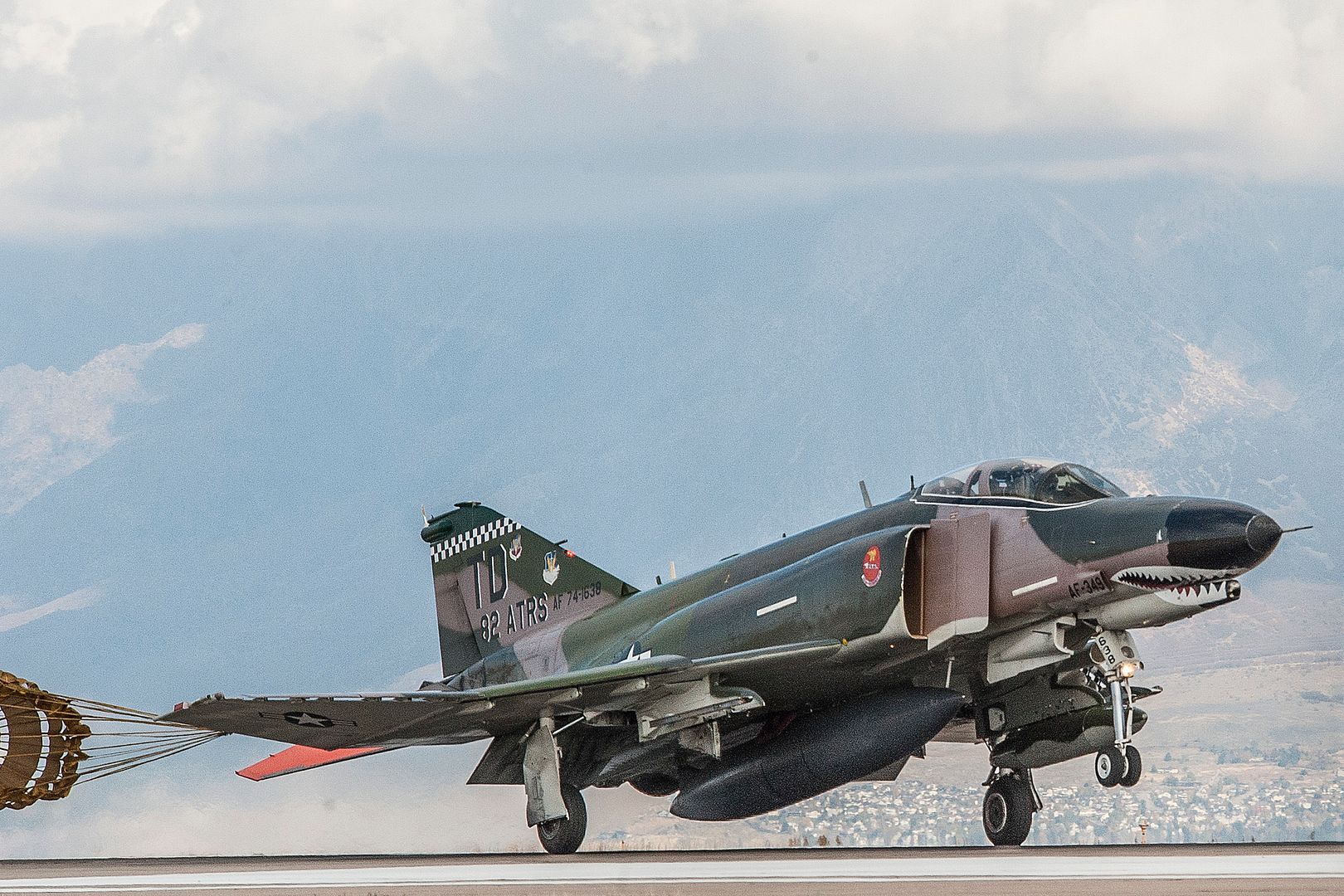
The QF-16 will replace the QF-4.
-
 Main AdminPACIFIC OCEAN (NNS) -- Five Lockheed Martin F-35B Lightning II aircraft landed on the amphibious assault ship USS America (LHA 6) on Friday, October 28.
Main AdminPACIFIC OCEAN (NNS) -- Five Lockheed Martin F-35B Lightning II aircraft landed on the amphibious assault ship USS America (LHA 6) on Friday, October 28.
America will embark seven F-35Bs -- two are scheduled to begin the third shipboard phase of developmental test (DT-III) and five are scheduled to conduct operational testing.
America, the first ship of its class, is an aviation-centric platform that incorporates key design elements to accommodate the fifth-generation fighter.
The ship's design features several aviation capabilities enhanced beyond previous amphibious assault ships which include an enlarged hangar deck, realignment and expansion of the aviation maintenance facilities, a significant increase in available stowage of parts and equipment, as well as increased aviation fuel capacity.
America is capable of accommodating F-35Bs, MV-22B Osprey tiltrotor aircraft, and a complement of Navy and Marine Corps helicopters.
The third test phase will evaluate F-35B Short Take-off Vertical Landing (STOVL) operations in a high-sea state, shipboard landings, and night operations. The cadre of flight test pilots, engineers, maintainers, and support personnel from the F-35 Patuxent River Integrated Test Force (ITF) are assigned to Air Test & Evaluation Squadron (VX) 23 at Naval Air Station Patuxent River, Maryland.
"It's exciting to start the execution phase of our detachment with VMX-1 (Marine Operational Test and Evaluation Squadron 1) on USS America," said Lt. Col. Tom "Sally" Fields, F-35 Patuxent River ITF Government Flight Test director assigned to VX-23. "During the next three weeks, we will be completing critical flight test for both Developmental Test (DT) and Operational Test (OT). The F-35 Pax River ITF and VX-23 will be conducting DT work that will establish the boundaries of safe operation for the F-35B in the 3F configuration. VMX-1 will be conducting OT operations focused on preparing maintenance crews and pilots for the first deployment of the F-35B aboard USS Wasp (LHD 1), scheduled to start in just over a year."
The operational testing will also include simulating extensive maintenance aboard a ship, said Col. George Rowell, commanding officer of VMX-1, based at Marine Corps Air Station Yuma, Arizona.
Rowell stated one of the VMX jets on board will be placed in the hangar bay, taken apart, and put together again, just to make sure everything goes well.
The maintenance work will include the replacement of a lift fan, the specialized equipment made by Rolls Royce and Pratt and Whitney that gives the F-35B variant its short take-off, "jump jet" capability, Rowell said.
The Marine Corps variant of the F-35 Lightning II reached the fleet first, with the service declaring initial operational capability July 2015.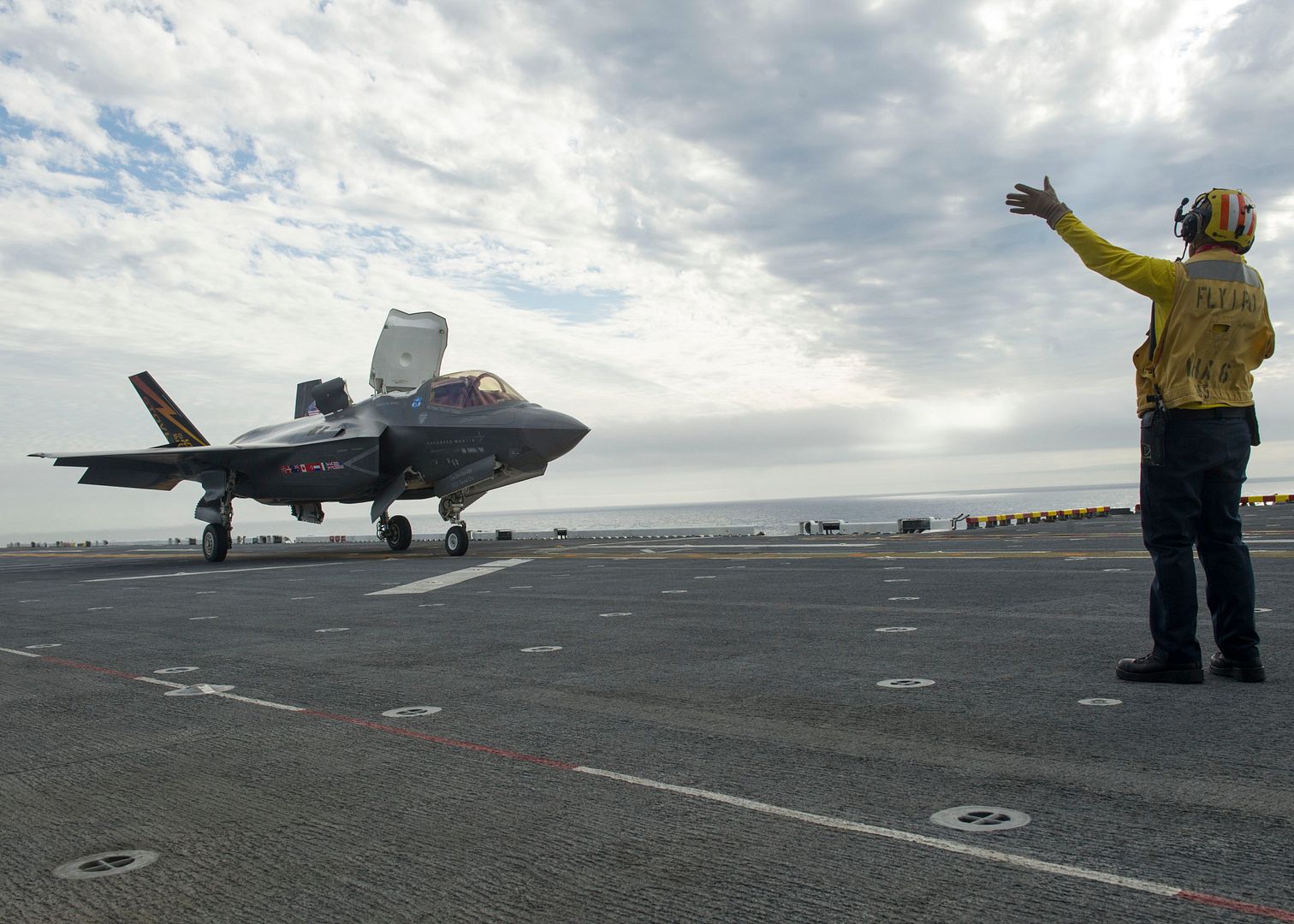
"The F-35 Lightning II is the most versatile, agile, and technologically-advanced aircraft in the skies today, enabling our Corps to be the nation's force in readiness -- regardless of the threat, and regardless of the location of the battle," said Lt. Gen. Jon Davis, deputy commandant for aviation, Marine Corps. "As we modernize our fixed-wing aviation assets for the future, the continued development and fielding of the short take-off and vertical landing, the F-35B remains the centerpiece of this effort."
"The America class of amphibious assault ship design enables it to carry a larger and more diverse complement of aircraft, including the tiltrotor MV-22 Osprey, the new F-35 Lightning II, and a mix of cargo and assault helicopters," added Davis. "America is able to support a wide spectrum of military operations and missions, including putting Marines ashore for combat operations, launching air strikes, keeping sea lanes free and open for the movement of global commerce, and delivering humanitarian aid following a natural disaster."
EVERETT, Wash., Oct. 31, 2016 -- Boeing (NYSE: BA) and Intrepid Aviation marked the delivery of Intrepid?s first direct ordered Boeing airplane, a 777-300ER that will be leased and operated by Philippine Airlines. This airplane is the first of four 777-300ERs ordered by Intrepid.
?We are excited to accept our first new aircraft from Boeing. This 777 delivery to Philippine Airlines underlines Intrepid?s continuous focus on investment into new aircraft on long-term leases with well established, strong airlines worldwide,? said Intrepid?s Chief Executive Officer, Olaf Sachau.
?Already a valued Intrepid customer, we are particularly delighted to bring this 777-300ER to the flag carrier of the Philippines during their 75th anniversary year ? the longest, continuously operating airline in Asia,? added Doug Winter, Intrepid?s President & Chief Commercial Officer.
"Intrepid is cementing its place as a leading widebody lessor by growing its fleet with the 777," said John Wojick, senior vice president of Global Sales & Marketing, Boeing Commercial Airplanes. "We appreciate their confidence in the airplane, which offers superior economics and a memorable passenger experience.?
Philippine Airlines plans to use the new airplane primarily on routes to North America. The carrier is scheduled to take a second 777-300ER from Intrepid before the end of the year.
?The 777 has become our standard for passenger comfort, deployed on our long-haul routes,? said PAL President and Chief Operating Officer Jaime J. Bautista. ?It is the pivotal equipment that will propel us to our corporate vision of becoming a five-star airline. With the luxurious cabin amenities installed on the 777, we are able to go beyond passenger expectation. We become the airline of choice in the markets we serve and we can showcase the best of the Philippines and of Filipinos to the world.?
The 777 is the world's most successful twin-engine, long-haul airplane. The 777-300ER is equipped with the world's most powerful GE90-115B commercial jet engine, and can seat up to 386 passengers in a three-class configuration with a maximum range of 7,825 nautical miles (14,490 kilometers).
Intrepid Aviation is a privately held commercial aircraft lessor, which owns commercial aircraft leased to airline operators worldwide. Intrepid Aviation focuses primarily on twin-engine widebody equipment, such as the Boeing 777 and 787.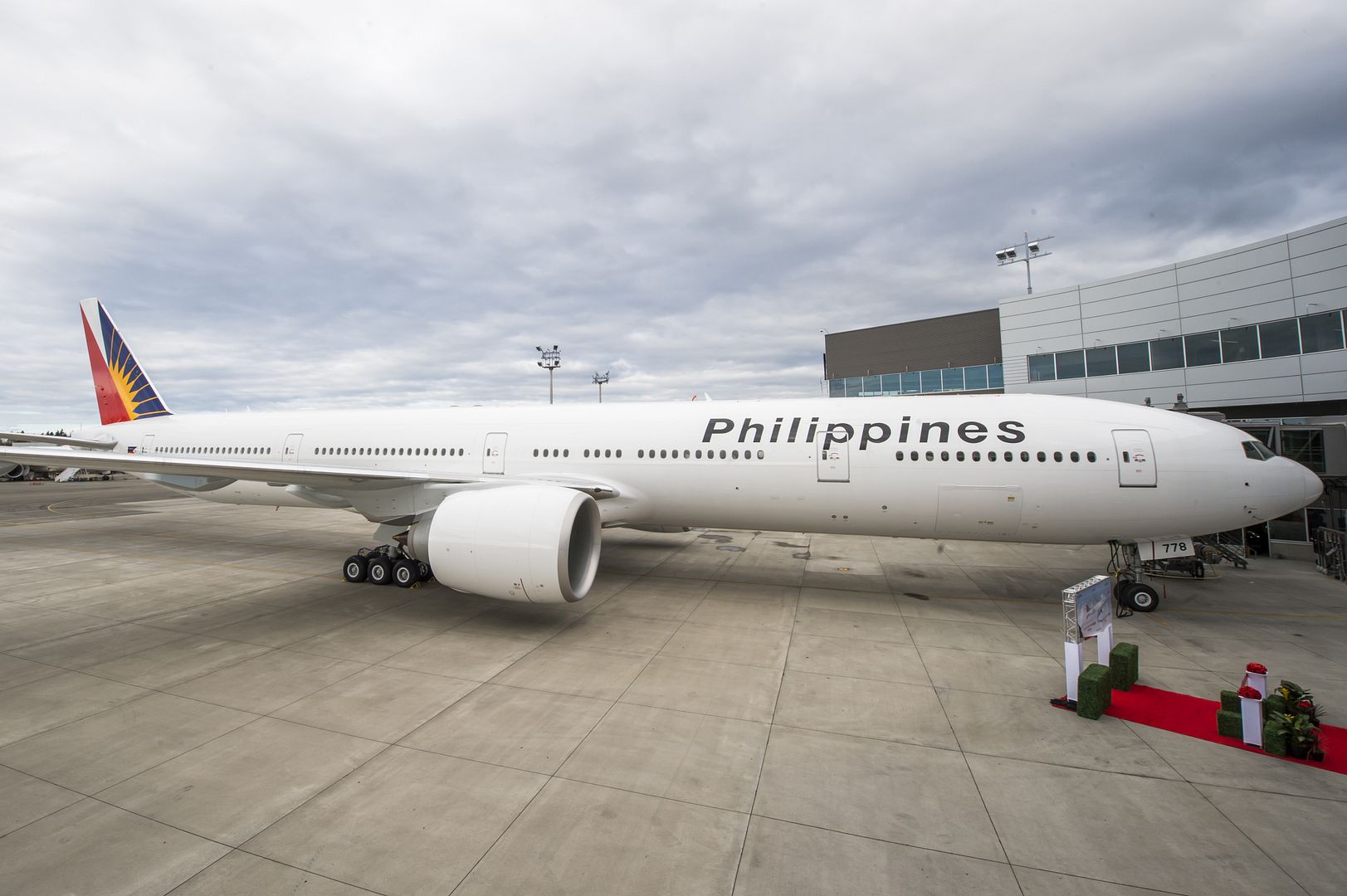
Orlando, Florida, October 31st, 2016 - Embraer Executive Jets today unveiled a new version of its Legacy 650 large business jet, the Legacy 650E. Featuring automation and technology updates, the aircraft, which already has exceptional operational costs and the largest cabin in its class, now carries an unprecedented 10-year or 10,000-flight hour warranty, which is the longest in the business jet industry. The entry into service is scheduled for 2017 at the list price of US$ 25.9 million.
?As a testament to our confidence in the Legacy 650?s heritage of robustness and near-perfect dispatch reliability, this new aircraft carries the longest warranty available in the business jet industry,? said Marco Tulio Pellegrini, President & CEO, Embraer Executive Jets. ?Whether for commercial or private operations, there is no large-cabin aircraft that is more economical, durable and comfortable. This is truly a well-rounded value proposition.?
With a restyled seat upholstery, the Legacy 650E?s spacious cabin features three distinct cabin zones with ample privacy, plus the exclusive option for a separate crew lavatory in the forward cabin.
Refinements to the aircraft fight deck include the Synthetic Vision System (SVS), as part of the latest Primus Elite Advanced Features (PEAF) from Honeywell, which also includes traffic collision avoidance system symbology and XM ground-based weather information to the moving map, providing pilots with enhanced situational awareness. In addition to the PEAF, the Legacy 650E also comes with autothrottle as standard equipment, improving the level of automation and reducing the cockpit workload. These technologies complement the proven Legacy 650E avionics system, which is compliant with all next-generation airspace mandates and requirements.
Besides that, two iPads with mounting systems are available in the cockpit, enabling pilots to enjoy a friendlier interface, easier updates and a full range of other tools to support their operation. These features reduce cockpit workload and create a more intuitive environment with the technological conveniences that pilots desire.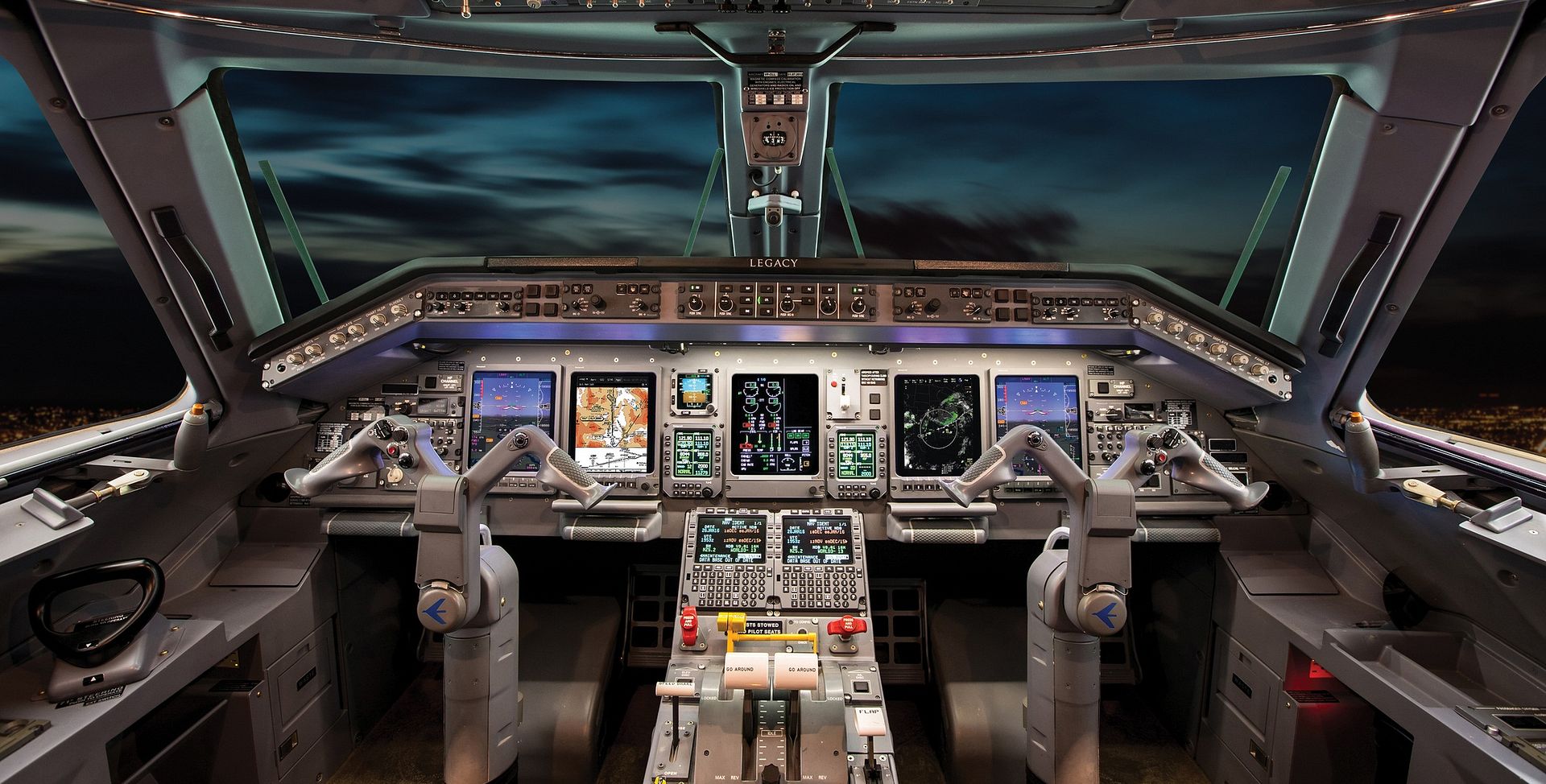
About the Legacy 650E
The large Legacy 650E comfortably carries up to 14 passengers with privacy in three distinct cabin zones with premium acoustic comfort. In addition to the best-in-class galley and a fully accessible in-flight baggage compartment that is larger than most ultra-long-range business jets, the aircraft may be configured with up to two lavatories. The Legacy 650E features internet connectivity and the latest generation in full HD in-flight entertainment, with Honeywell?s Ovation Select entertainment and cabin management system. The aircraft has a range of 3,900 nautical miles (7,223 kilometers) with four passengers, with NBAA IFR fuel reserves.
The Legacy 650E is the first aircraft to offer a 10-year or 10,000-flight hour warranty for systems and components (OEM and supplier), matching the warranty period to that of the airframe. This is now the longest warranty in the industry. The interior warranty remains the same at 2 years, as does exterior paint at 2 years or 1,000 hours, engines at 5 years or 2,500 hours, APU at 5 years, 3,000 hours or 6,000 cycles, and avionics at 5 years or 5,000 hours.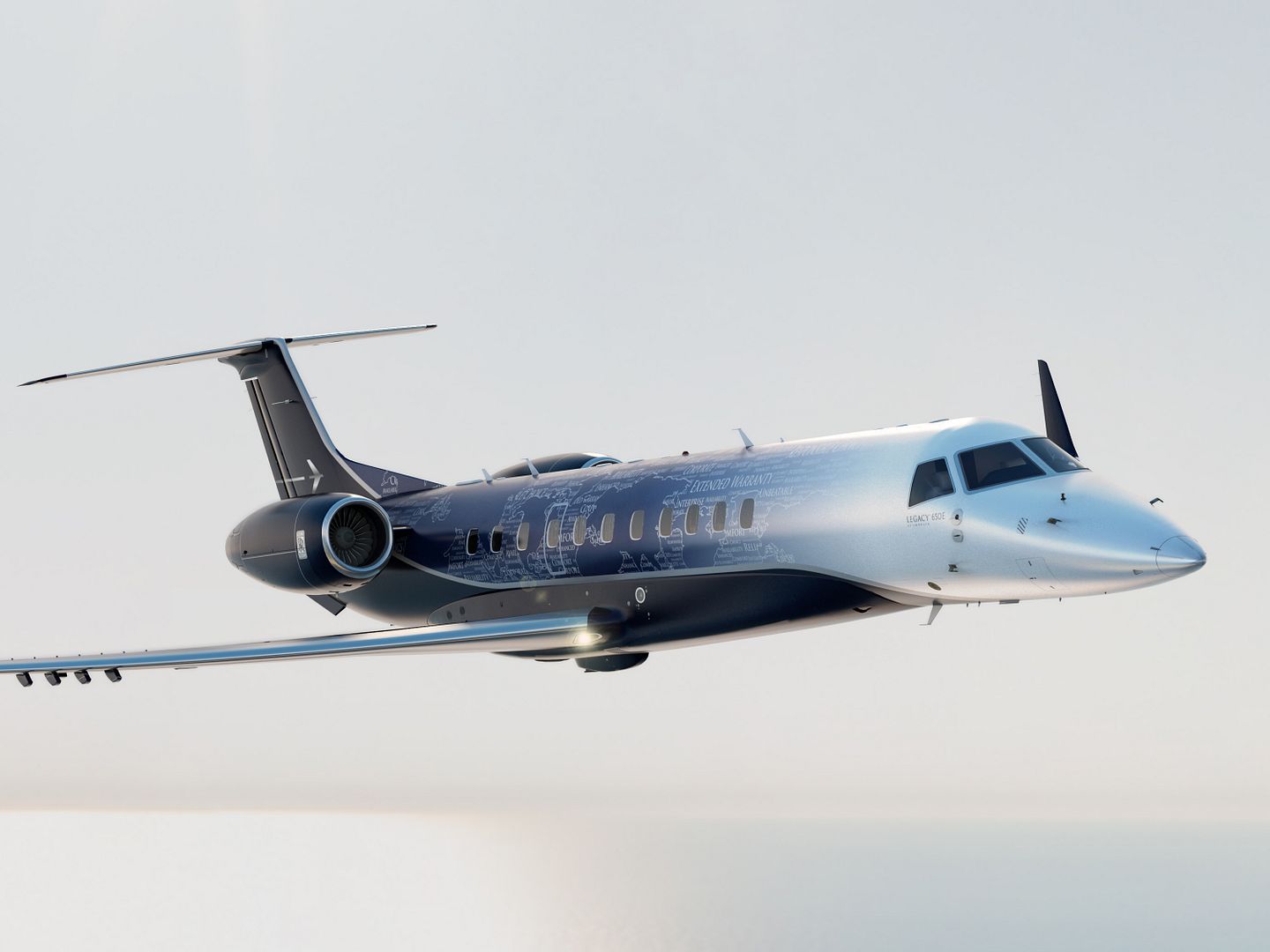
-
 Main AdminARABIAN GULF (Oct. 30, 2016) An F/A-18F Super Hornet assigned to the Fighting Swordsmen of Strike Fighter Squadron (VFA) 32 makes an arrested landing on the flight deck of the aircraft carrier USS Dwight D. Eisenhower (CVN 69) (Ike). Ike and its Carrier Strike Group are deployed in support of Operation Inherent Resolve, maritime security operations and theater security cooperation efforts in the U.S. 5th Fleet area of operations. (U.S. Navy photo by Petty Officer 3rd Class Andrew J. Sneeringer)
Main AdminARABIAN GULF (Oct. 30, 2016) An F/A-18F Super Hornet assigned to the Fighting Swordsmen of Strike Fighter Squadron (VFA) 32 makes an arrested landing on the flight deck of the aircraft carrier USS Dwight D. Eisenhower (CVN 69) (Ike). Ike and its Carrier Strike Group are deployed in support of Operation Inherent Resolve, maritime security operations and theater security cooperation efforts in the U.S. 5th Fleet area of operations. (U.S. Navy photo by Petty Officer 3rd Class Andrew J. Sneeringer)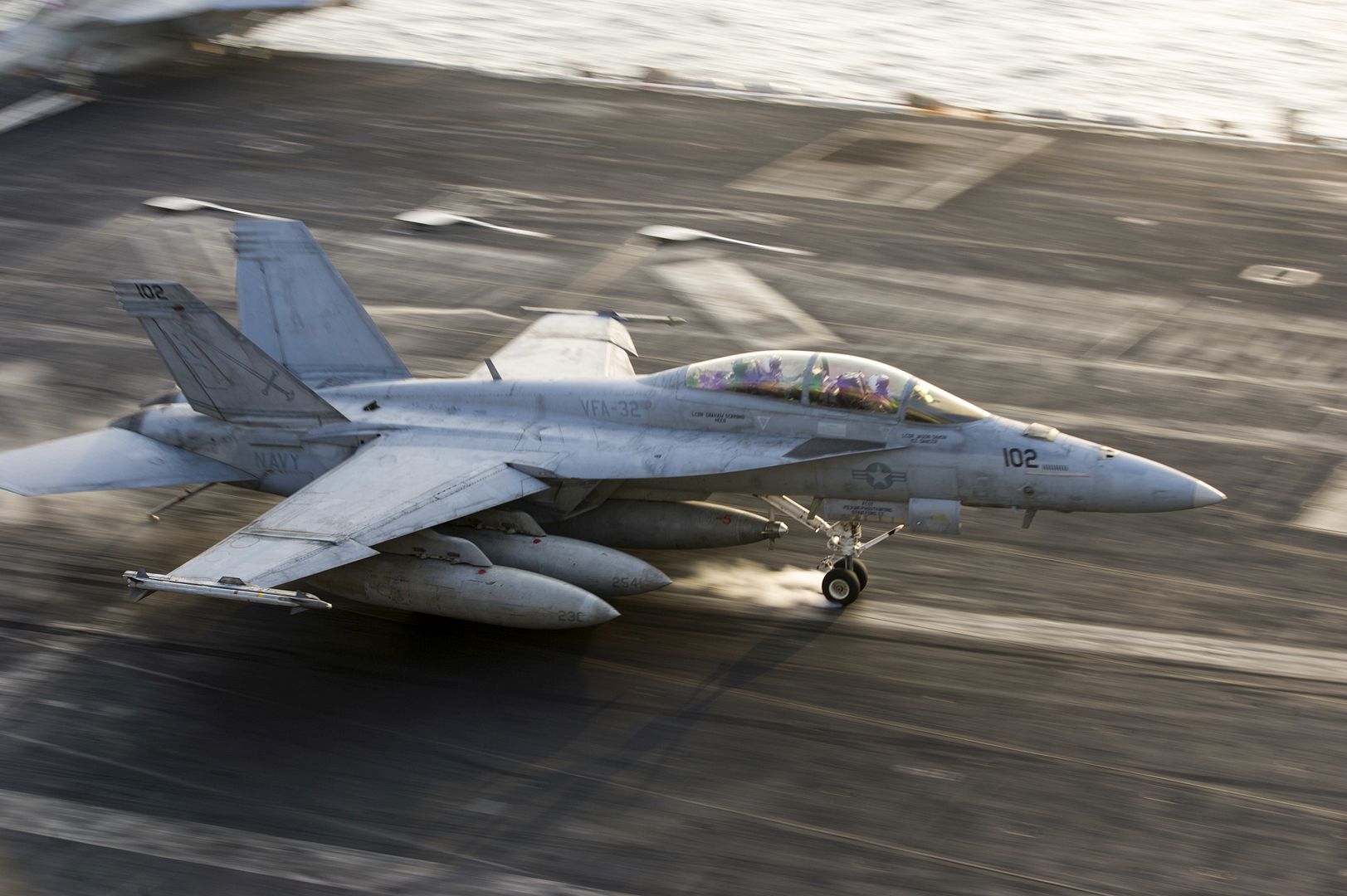
An F/A-18E, assigned to the ?Royal Maces? of Strike Fighter Squadron (VFA) 27, lands on the flight deck of the Navy?s only forward-deployed aircraft carrier, USS Ronald Reagan (CVN 76), during Exercise Keen Sword 2017 (KS17). Ronald Reagan is participating in KS17, a joint, bilateral field-training exercise involving U.S. military and Japan Self-Defense Force personnel designed to increase the combat readiness and interoperability of the Japan-U.S. alliance. (U.S. Navy photo by Seaman Jamaal Liddell/Released)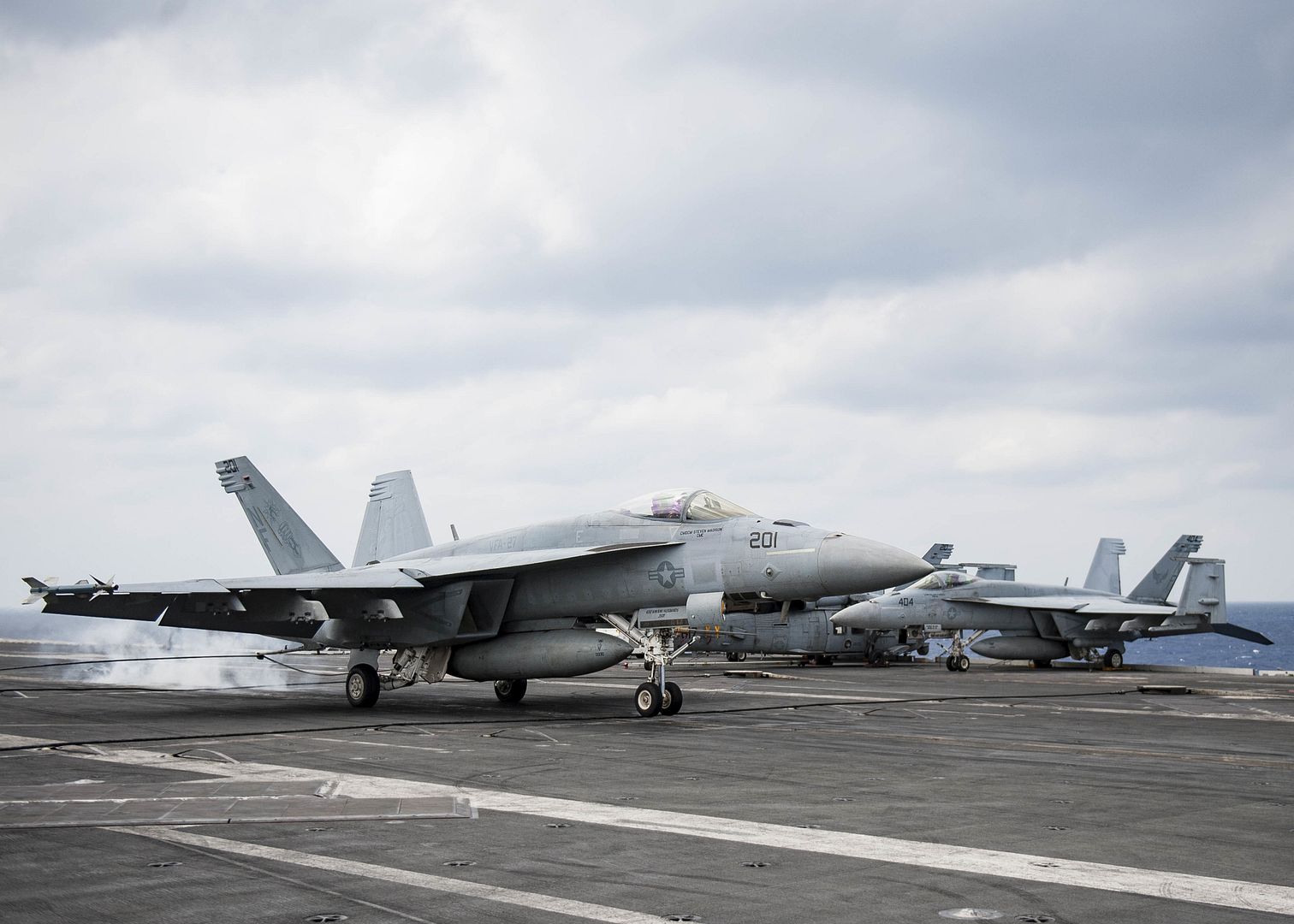
A Japanese MCH-101 airborne mine countermeasures helicopter carrying Vice Adm. Hiroshi Yamamura, commander, Fleet Escort Force, and Rear Adm. Tatsuya Fukuda, commander, Escort Flotilla 4, lands on the flight deck of the Navy?s only forward-deployed aircraft carrier, USS Ronald Reagan (CVN 76) for the start of Exercise Keen Sword 2017 (KS17). Ronald Reagan is participating in Exercise KS17, a joint, bilateral field-training exercise involving U.S. military and Japan Self-Defense Force personnel designed to increase the combat readiness and interoperability of the Japan-U.S. alliance. (U.S. Navy photo by Seaman MacAdam Kane Weissman/Released)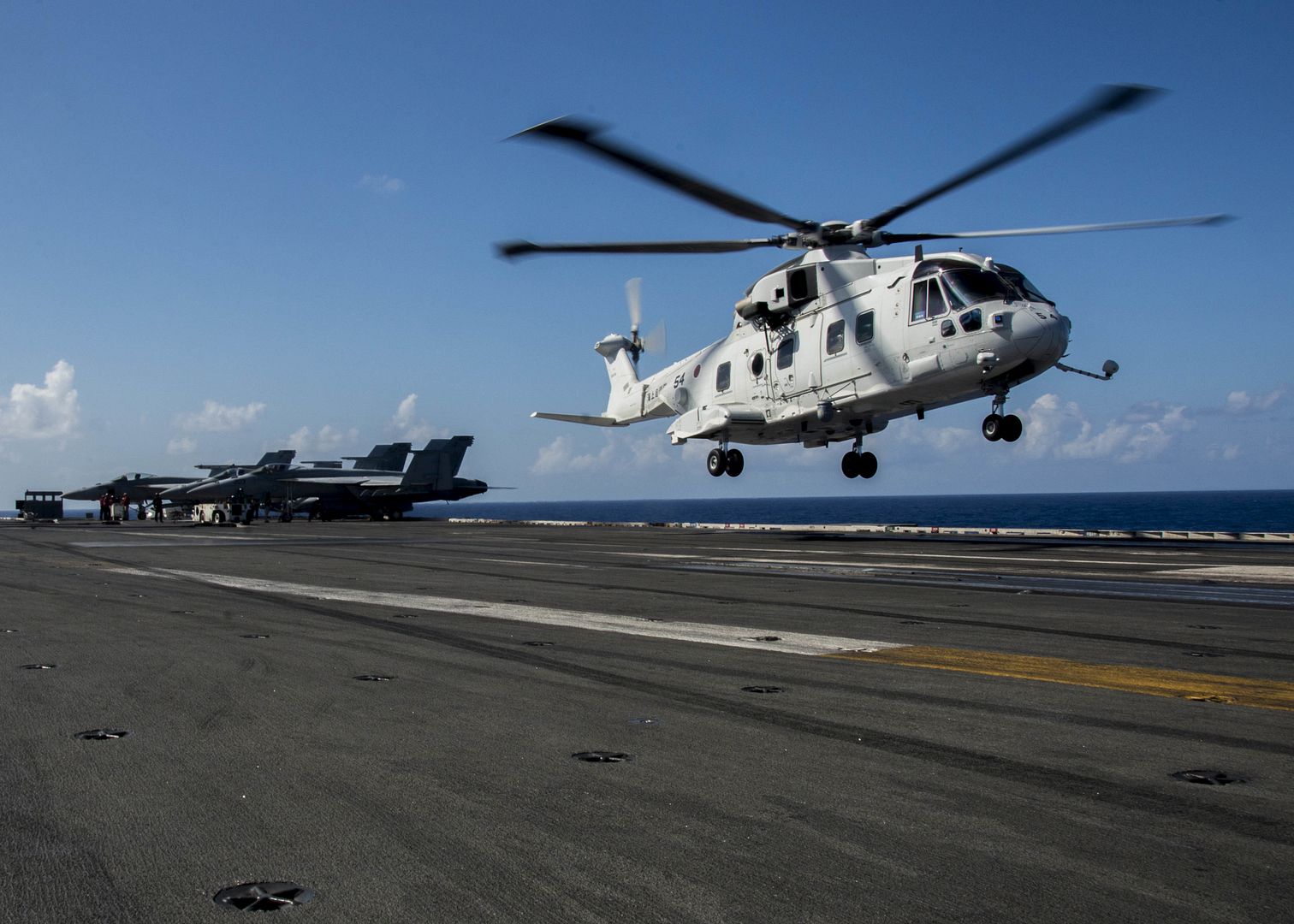
-
 Main AdminA B-52H Stratofortress assigned to Air Force Global Strike Command (AFGSC) takes off from the flightline at Minot Air Force Base, N.D., Oct. 30, 2016, during exercise Global Thunder 17. AFGSC supports U.S. Strategic Command's (USSTRATCOM) global strike and nuclear deterrence missions by providing strategic assets, including bombers like the B-52 and B-2, to ensure a safe, secure, effective and ready deterrent force. Global Thunder is an annual training event that assesses command and control functionality in all USSTRATCOM mission areas and affords component commands a venue to evaluate their joint operational readiness. (U.S. Air Force photo by Tech. Sgt. Evelyn Chavez)
Main AdminA B-52H Stratofortress assigned to Air Force Global Strike Command (AFGSC) takes off from the flightline at Minot Air Force Base, N.D., Oct. 30, 2016, during exercise Global Thunder 17. AFGSC supports U.S. Strategic Command's (USSTRATCOM) global strike and nuclear deterrence missions by providing strategic assets, including bombers like the B-52 and B-2, to ensure a safe, secure, effective and ready deterrent force. Global Thunder is an annual training event that assesses command and control functionality in all USSTRATCOM mission areas and affords component commands a venue to evaluate their joint operational readiness. (U.S. Air Force photo by Tech. Sgt. Evelyn Chavez)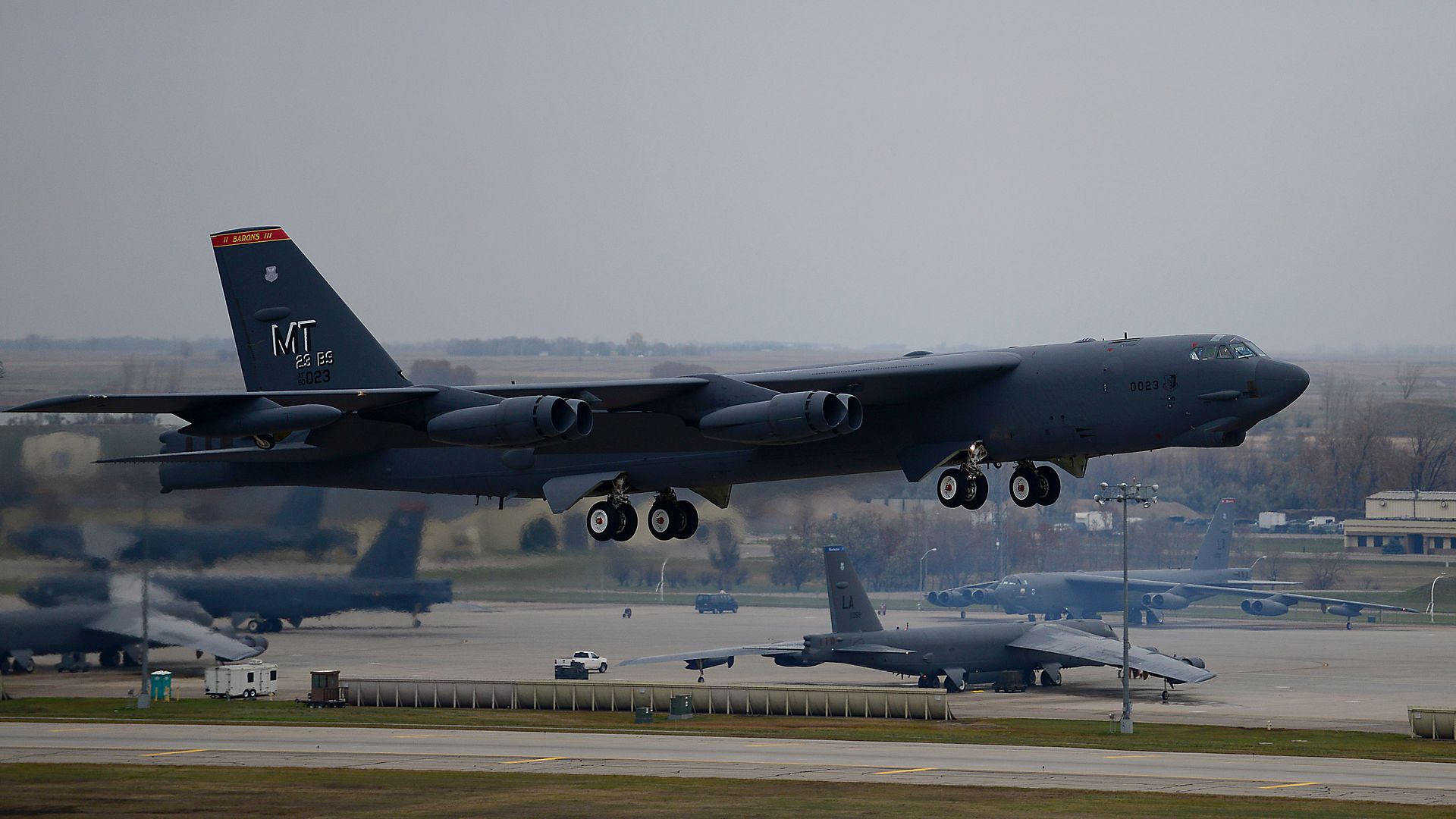
A B-52H Stratofortress assigned to Air Force Global Strike Command (AFGSC) takes off from the flightline at Minot Air Force Base, N.D., Oct. 30, 2016, during exercise Global Thunder 17. AFGSC supports U.S. Strategic Command's (USSTRATCOM) global strike and nuclear deterrence missions by providing strategic assets, including bombers like the B-52 and B-2, to ensure a safe, secure, effective and ready deterrent force. Global Thunder is an annual training event that assesses command and control functionality in all USSTRATCOM mission areas and affords component commands a venue to evaluate their joint operational readiness. (U.S. Air Force photo by Tech. Sgt. Evelyn Chavez)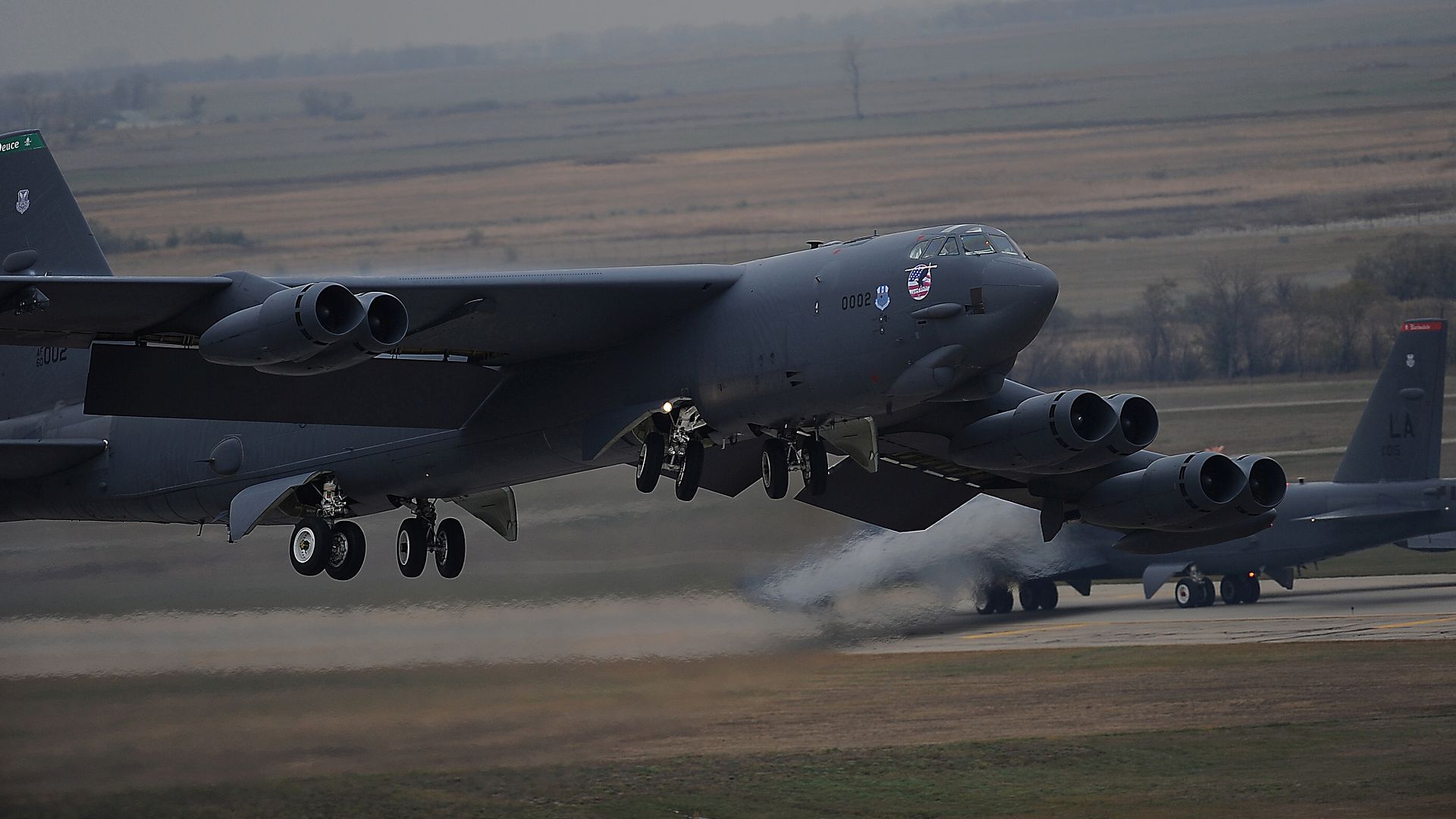
ARABIAN GULF (Oct. 30, 2016) An E2-C Hawkeye assigned to the Screwtops of Airborne Early Warning Squadron (VAQ) 130 makes an arrested landing on the flight deck of the aircraft carrier USS Dwight D. Eisenhower (CVN 69). Dwight D. Eisenhower and its carrier strike group are deployed in support of Operation Inherent Resolve, maritime security operations and theater security cooperation efforts in the U.S. 5th Fleet area of operations. (U.S. Navy photo by Petty Officer 3rd Class Andrew J. Sneeringer/Released)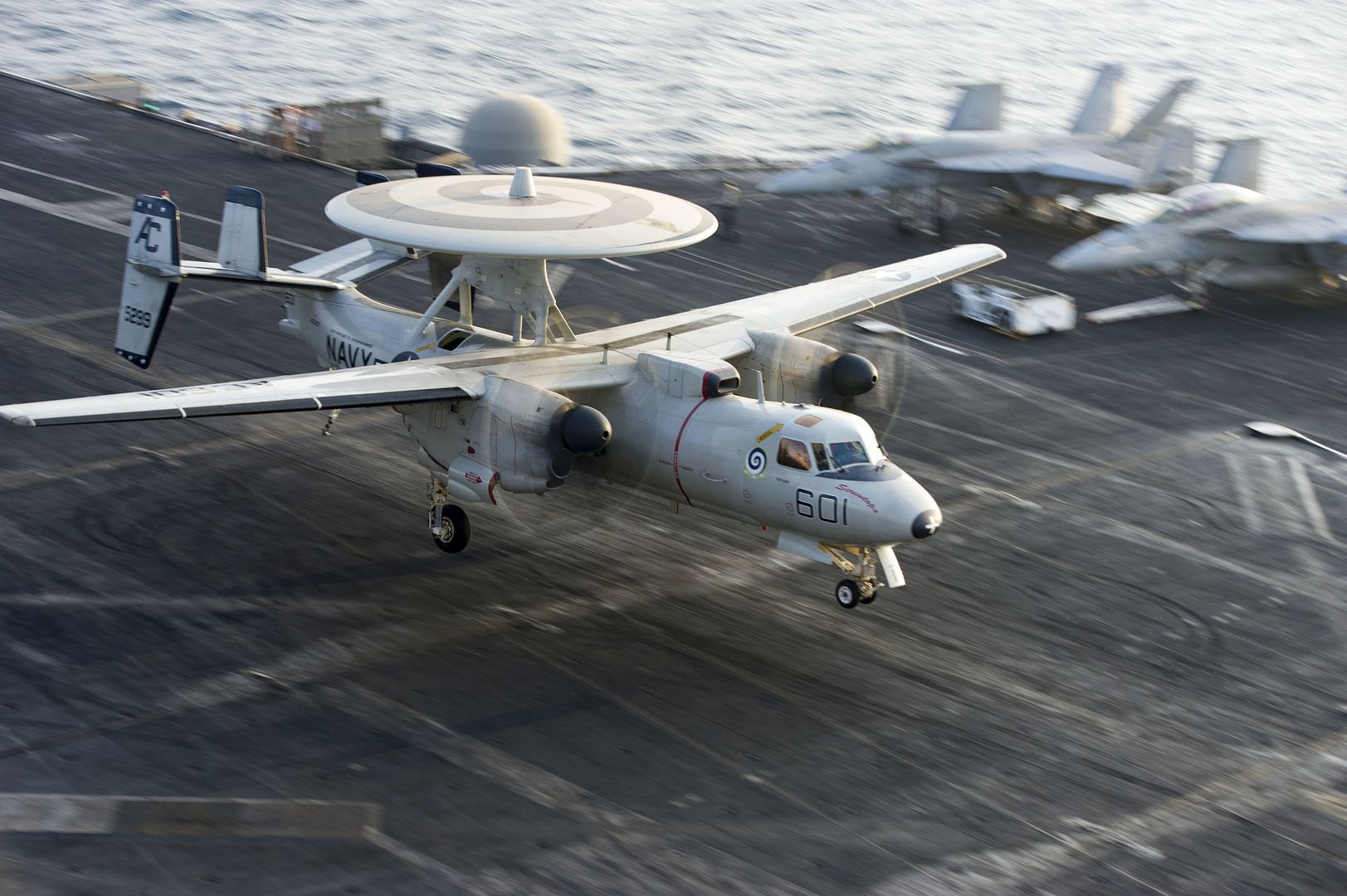
U.S. Air Force Airmen with the 172d Airlift Wing, use a K-Loader to load medical supplies on a 186th Air Refueling Wing, KC-135R Stratotanker aircraft, at the Gulfport Combat Readiness Training Center, Miss., during Southern Strike 2017 (SSTK2017), Oct. 31, 2016. SSTK2017 is a total force, multi-service training exercise hosted by the Mississippi Air National Guard?s Combat Readiness Training Center in Gulfport, Miss., from Oct. 24 through Nov. 4, 2016. The exercise emphasizes air-to-air, air-to-ground and special operations forces training opportunities. These events are integrated into demanding hostile and asymmetric scenarios with actions from specialized ground forces and combat and mobility air forces. (U. S. Air National Guard Photo by Master Sgt. Richard L. Smith)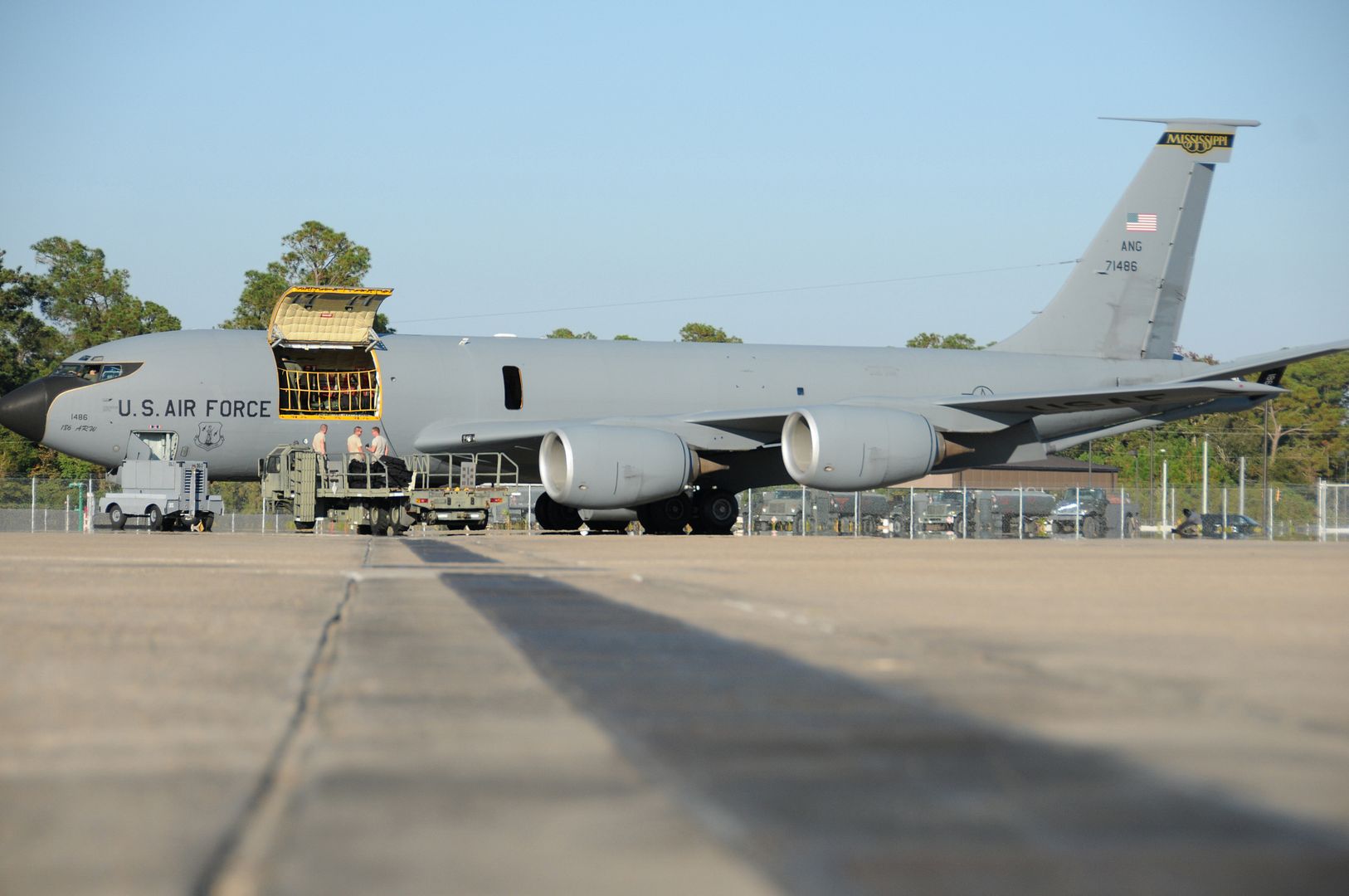
November 1, 2016 Montr?al Commercial Aircraft, Press Release
Bombardier Commercial Aircraft announced today that Industrial Bank Financial Leasing Co., Ltd. (also known as CIB Leasing) headquartered in Beijing, China is the previously announced unidentified customer that had placed a firm order for 10 CRJ900 aircraft. This purchase agreement was initially announced on June 20, 2016. Both parties will work closely together to explore market opportunities for regional fleet growth and network expansion.
As previously announced by Bombardier, based on the list price, the firm order for 10 CRJ900 aircraft is valued at approximately $472 million US.
About CRJ Series Aircraft
Every 10 seconds a CRJ Series regional jet takes off somewhere in the world. The CRJ Series family of aircraft has transported almost 1.6 billion passengers to become the world?s most successful regional jet program -- linking people and communities like no other. The CRJ Series regional jets have revolutionized aviation with their proven efficiency, reliability and profitability. The CRJ Series aircraft family includes over 100 owners and operators in approximately 40 countries and the worldwide fleet has logged over 43.5 million flight hours.
Bombardier has booked a total of 1,902 firm orders for CRJ Series aircraft, including 428 CRJ900 aircraft.
About Industrial Bank Leasing Co., Ltd.
Industrial Bank was established in August of 1988 and is one of the first batch of joint-stock commercial bank approved by China State Council and China People?s Bank. According to the banker?s report on the Top 1000 banks in the world, Industrial Bank was ranked at No.32 in terms of tier 1 capital and No.33 in terms of total assets, and is among the top 50 banks worldwide. As a fully owned subsidiary of Industrial Bank, Industrial Bank Financial Leasing Co., Ltd (CIB Leasing) was established in August 2010 and approved by the China Banking Regulatory Commission. With registered capital of 7 billion RMB, and total assets of 100 billion RMB, the company is positioned as No.5 in China?s leasing Industry.
CIB Leasing is dedicated to developing its leasing business in aviation, providing professional financial leasing services to general aviation, commercial airlines as well as upstream and downstream enterprises of aviation industry (including airport infrastructure). By the end of June 2016, CIB Leasing?s fleet size achieved 60 aircraft.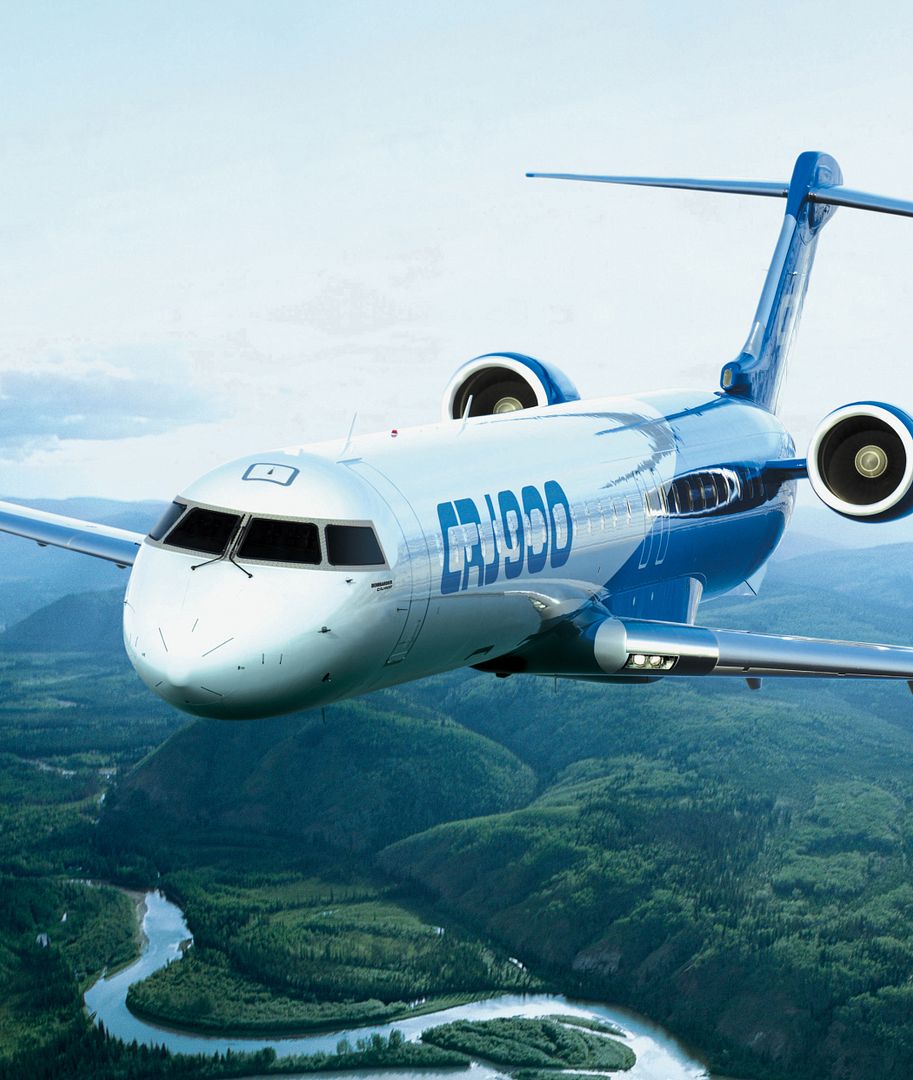
-
 Main AdminEDWARDS AIR FORCE BASE, Calif. --
Main AdminEDWARDS AIR FORCE BASE, Calif. --
From Norway to Australia, members from a number of allied and partner nations have come to Edwards to team with base units to test systems, enhance international cooperation and advance their own air forces? capabilities.
At the 416th Flight Test Squadron, a team of U.S. Air Force engineers and pilots are working with Norwegian government and industry personnel in testing the Joint Strike Missile. The JSM is designed to be carried in the F-35A?s internal weapons bay and is the only powered, anti-surface warfare missile to do so according to Norwegian officials, said James Cook, 416th FLTS JSM program manager.
The JSM is an advanced missile made of composite materials and uses stealth technology. It has air intakes, fold-out wings and tail fins. The navigation system supports terrain-following flight and can be used against sea- and land-based targets.
Before it can be integrated with the F-35A, it is being tested on F-16 Fighting Falcons from the 416th FLTS. The F-16 provides an excellent platform to initially test the missile before it?s transferred to the F-35 fifth-generation fighter, test managers say.
?What we?re doing is conducting risk-mitigation testing with the F-16 before the JSM is integrated on the F-35,? said Cook.
All tests are conducted over the Utah Test and Training Range.
?I think it?s awesome to be a part of the next generational fighter while being in a legacy fighter combined test force. I?m excited to see the final outcome, which will be the culmination of all we?ve done here. To see it hit the target and explode the way it was planned to do,? Cook said.
Along with Cook, the JSM team consists of test pilots Maj. John Trombetta and Maj. Jameel Janjua (Royal Canadian Air Force), flight test engineers Eric Biesen and Tom Smeeks and Collin Drake, project engineer.
The JSM program at the 416th is one project that falls under the squadron?s European Participating Air Force Program, which Cook manages. The squadron conducts tests for European customers when requested.
A U.S. Air Force F-16 Fighting Falcon piloted by Maj. Jameel Janjua of the Royal Canadian Air Force carries a developmental test version of the Joint Strike Missile to its release point above the Utah Test and Training Range west of Salt Lake City, Utah. When development is complete, the Joint Strike Missile is intended for use aboard the F-35 Lighting II Joint Strike Fighter. Janjua is assigned to the 416th Flight Test Squadron based at Edwards as part of an officer exchange program. (U.S. Air Force photo by Christopher Okula)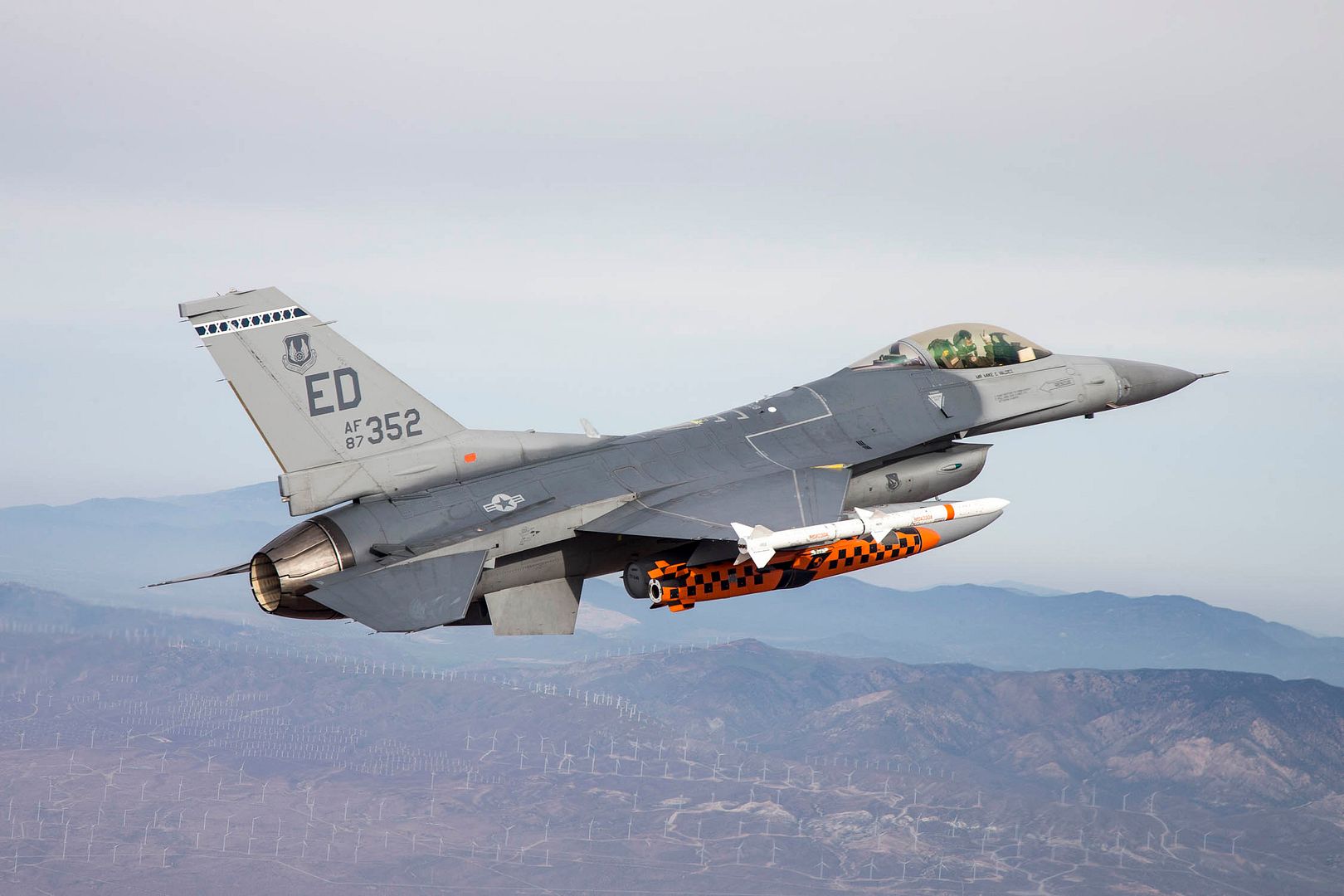
WHITEMAN AIR FORCE BASE, Mo. -- Members of Team Whiteman recently completed Global Thunder 17 (GT17), a U.S. Strategic Command (USSTRATCOM) annual field training and battle staff exercise.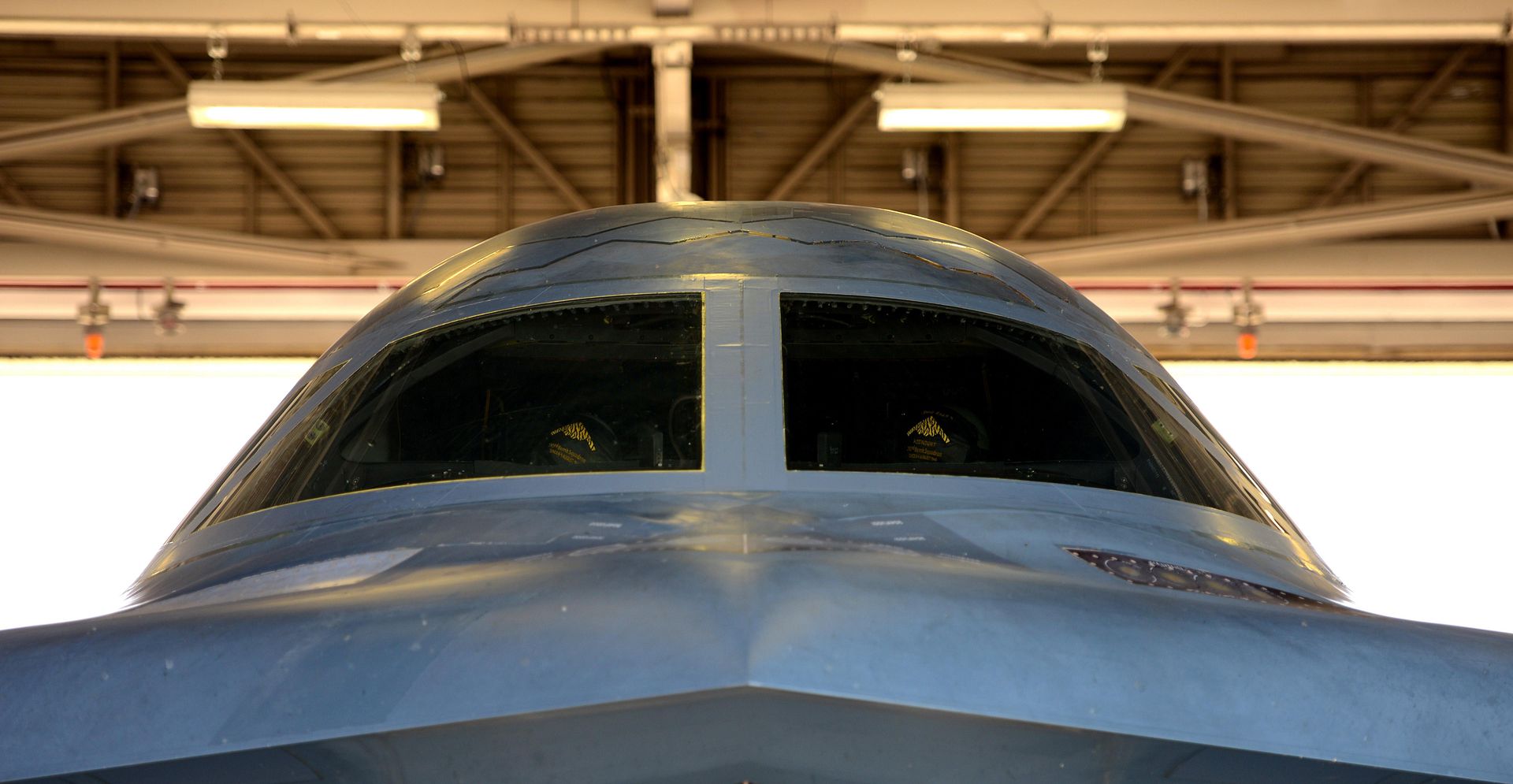
?Exercises like GT17 are an opportunity for us to demonstrate to our higher headquarters, our allies and our adversaries how we effectively and efficiently execute our nation?s most important strategic mission,? said Brig. Gen. Paul W. Tibbets IV, the 509th Bomb Wing commander. ?Thanks to the efforts of our fully integrated total force team, we clearly validated our safe, secure, effective and ready strategic deterrent capabilities here.?
The scenario for GT17 integrated a variety of strategic threats to the U.S. and assessed many of the USSTRATCOM forces that are available to geographic combatant commanders, including space; cyber; intelligence, surveillance and reconnaissance; global strike; and ballistic missile defense assets.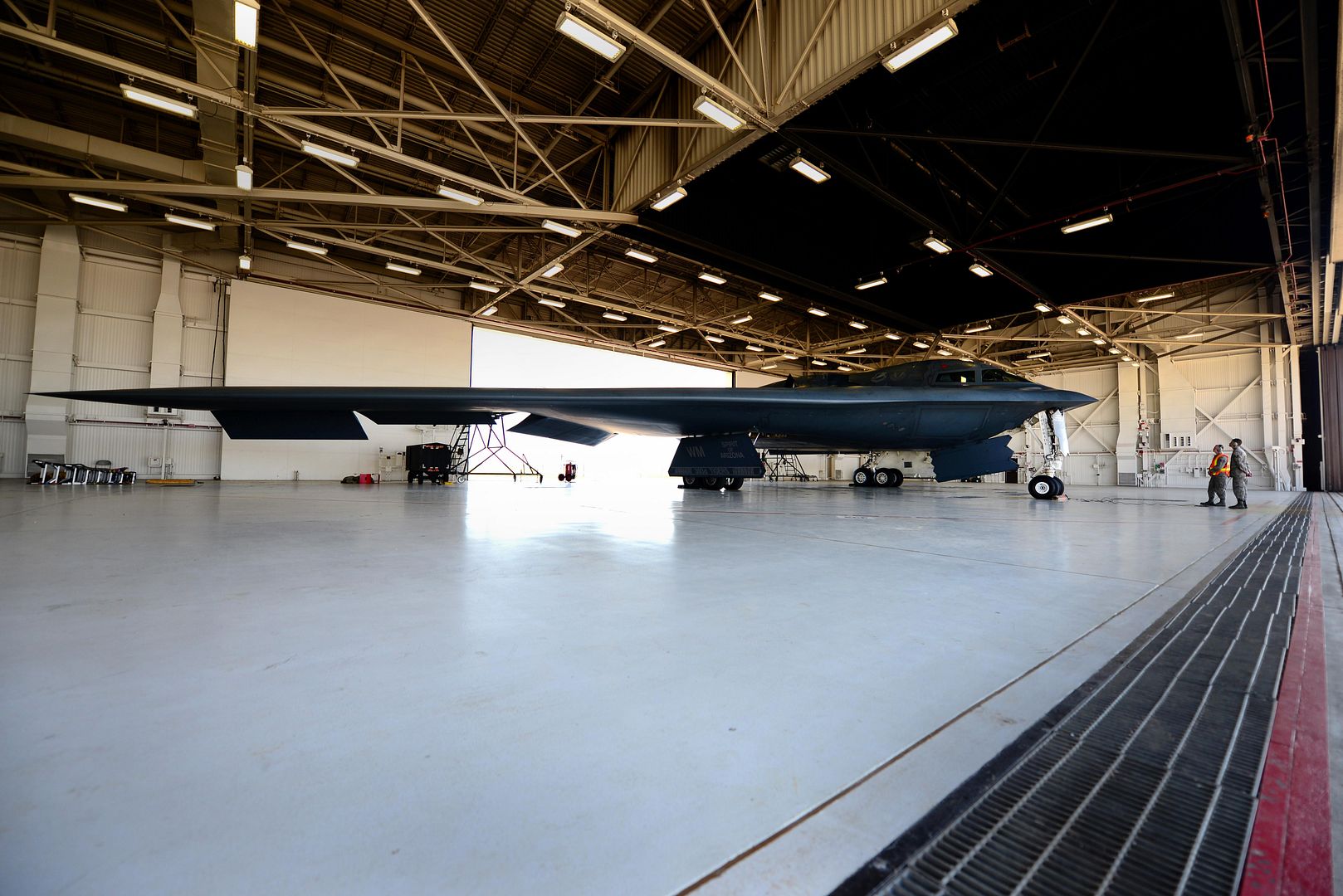
In response to the scenario, Team Whiteman, which is comprised of active-duty Airmen as well as Air National guardsmen, generated numerous B-2 Spirit aircraft throughout the exercise in support of USSTRATCOM objectives.
Because of the B-2 Spirit?s unique and pivotal capabilities, Team Whiteman trains daily to ensure its operational readiness. The B-2, which is maintained and operated by Team Whiteman, is one of the key aircraft used to support USSTRATCOM?s global strike and bomber assurance and deterrence missions. Its stealth capabilities provide U.S. decision makers the capability to deter strategic attacks and, if necessary, penetrate the most secure defense systems to rapidly deliver its payload when called upon by the President and Secretary of Defense.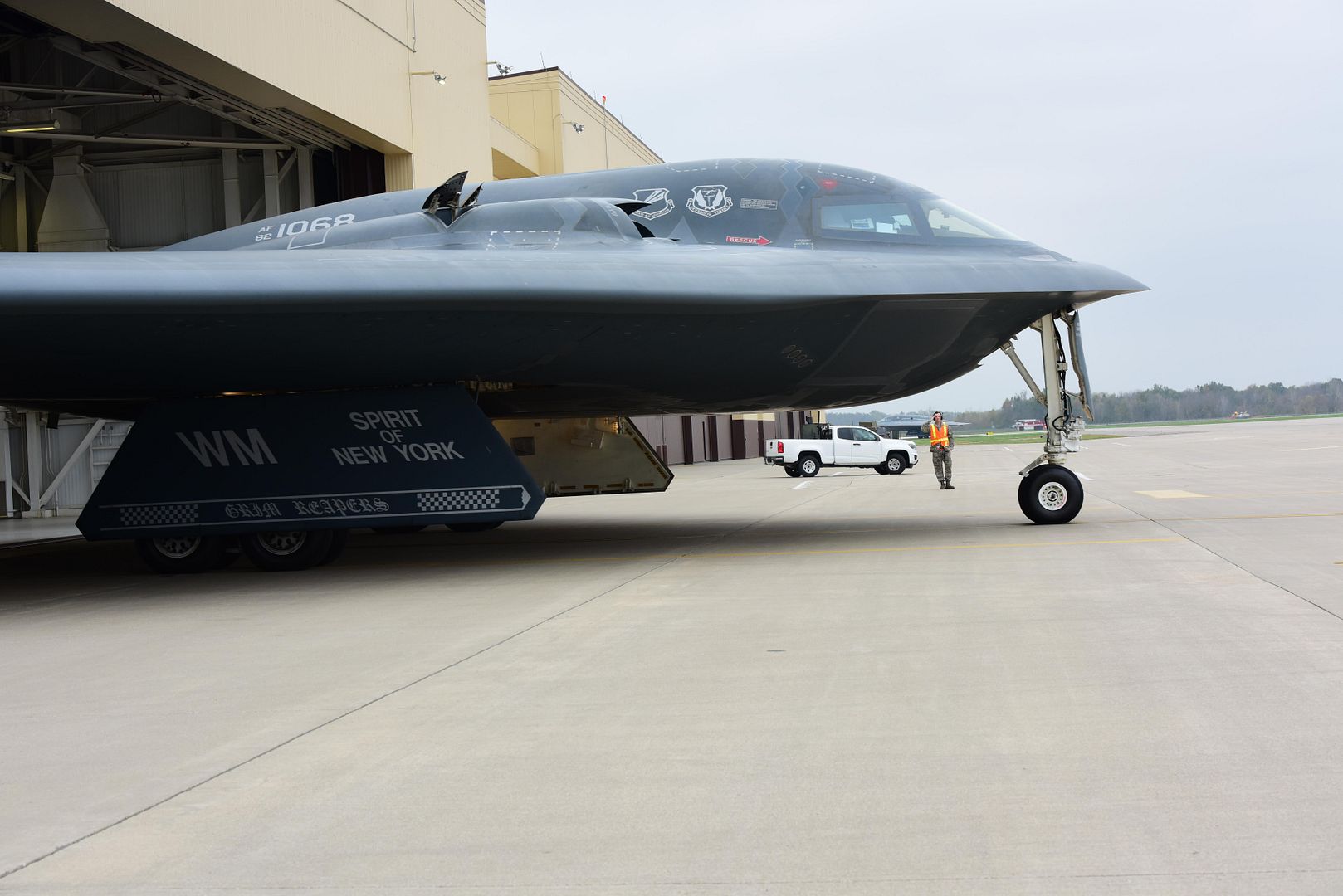
?Brig. Gen. Tibbets and I are incredibly proud of the way our total force team performed during GT17,? said Col. Kenneth Eaves, the 131st Bomb Wing commander. ?Once again, we proved why our team is America?s premier bomber force.?
Sailors prepare an F-35B Lightning II aircraft for refueling on the flight deck of the amphibious assault ship USS America (LHA 6). The F-35B short takeoff/vertical landing (STOVL) variant is the world's first supersonic STOVL stealth aircraft. America, with Marine Operational Test and Evaluation Squadron 1 (VMX-1), Marine Fighter Attack Squadron 211 (VMFA-211) and Air Test and Evaluation Squadron 23 (VX-23) embarked, are underway conducting operational testing and the third phase of developmental testing for the F-35B Lightning II aircraft, respectively. The tests will evaluate the full spectrum of joint strike fighter measures of suitability and effectiveness in an at-sea environment. U.S. Navy photo by Petty Officer 3rd Class Kyle Goldberg (Released)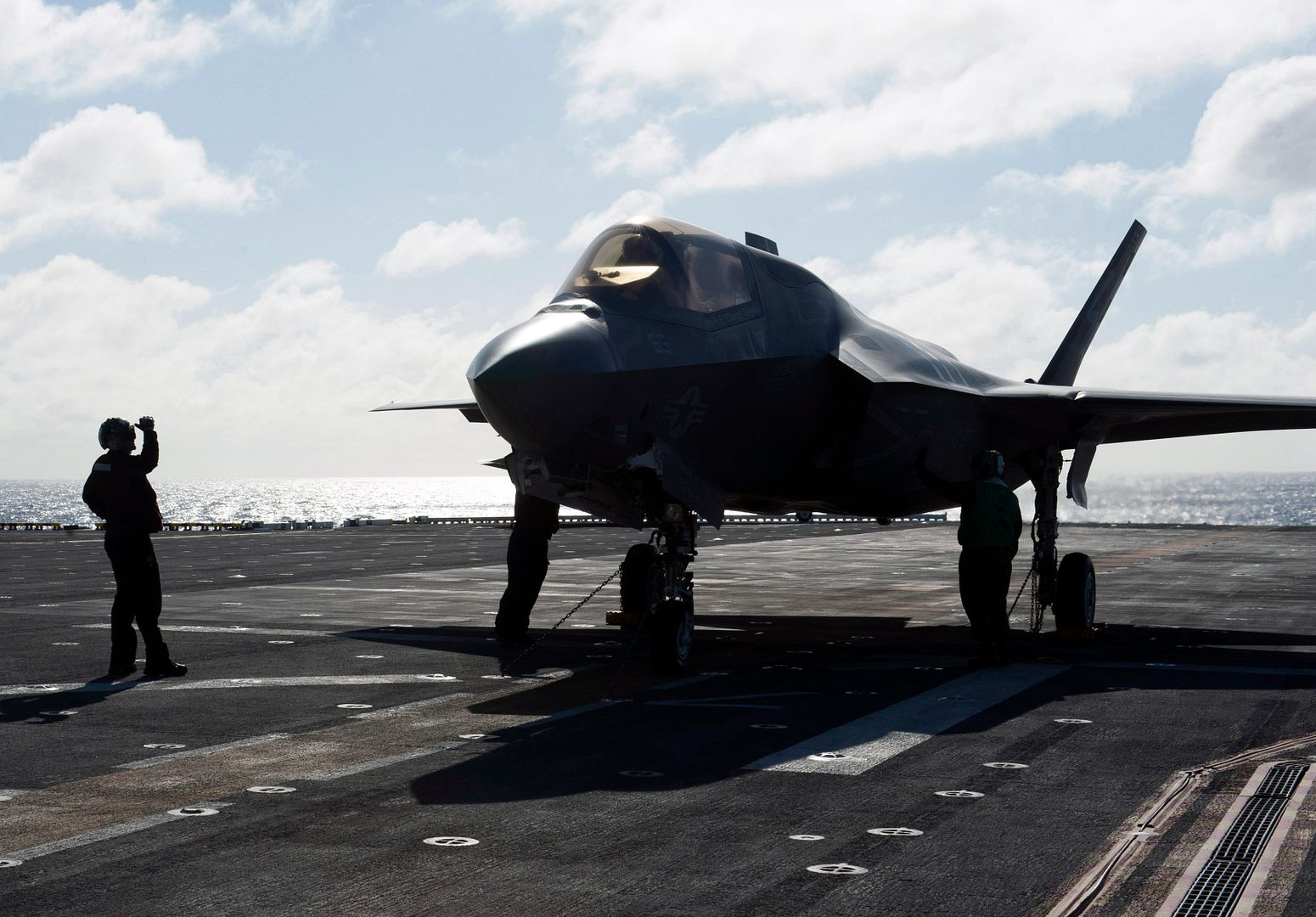
Marietta, Ga., Nov. 1, 2016 ? The newest C-5M Super Galaxy was ferried from the Lockheed Martin (NYSE: LMT) facility here on Oct. 28. This C 5M will be assigned to the 433rd Airlift Wing, the U.S. Air Force Reserve Command unit at Joint Base San Antonio-Lackland, Texas.
The aircraft, formerly assigned to Westover Air Reserve Base, Massachusetts, was flown to Stewart Air National Guard Base, New York, for interior paint restoration and to receive its new Texas state flag tail flash prior to final delivery. It will be the fourth C-5M assigned to Lackland.
An Air Force Reserve Command aircrew led by Brig. Gen. James J. Fontanella, the commander of the Force Generation Center (FCG) at Headquarters Air Force Reserve Command, Robins Air Force Base, Georgia, ferried the aircraft.
This aircraft (U. S. Air Force serial number 87-0038, company number 124) was originally delivered to the Air Force in December 1988 as a C-5B and had recorded approximately 18,950 flight hours prior to the ferry flight.
Some of those flight hours came in 2006, when Fontanella, then assigned to Travis Air Force Base, California, led a crew that flew 87-0038 around the world.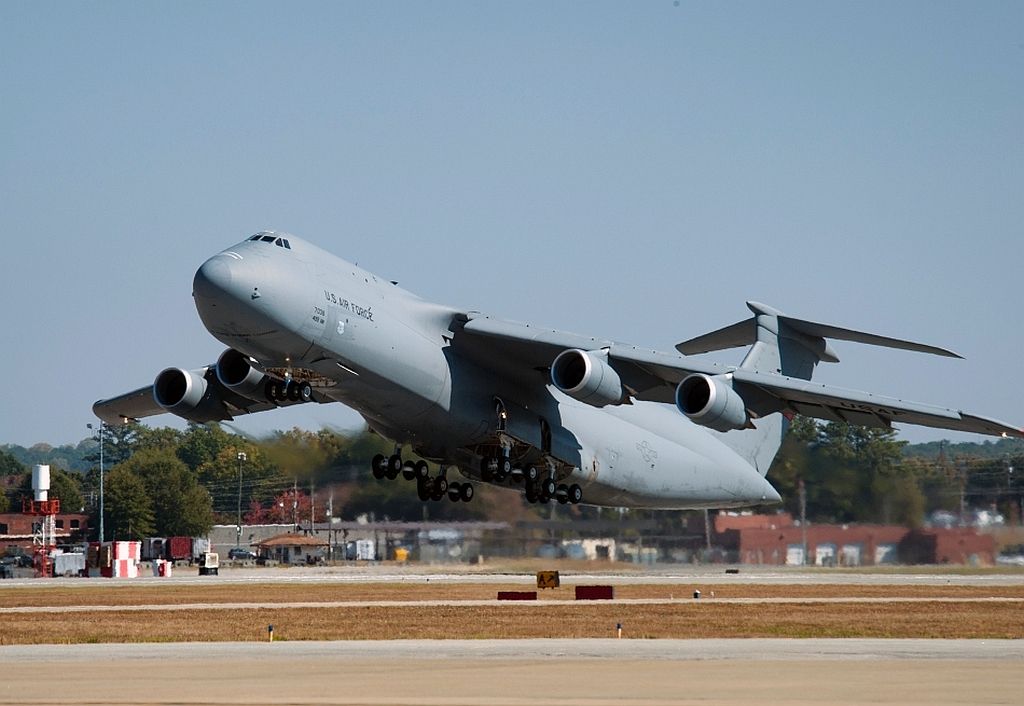
2 November 2016 Press Release
Airbus Corporate Jets has won a new commitment for an ACJ320neo from an undisclosed customer. The deal includes turnkey cabin outfitting ? a first for the new ACJneo Family.
Airbus? ACJ319neo and ACJ320neo feature new-generation engines, sharklets and a collection of other improvements to deliver most of the benefits of an all-new design. These include better range and a 16 per cent fuel saving, combined with the best corporate jet cabin in the sky.
Turnkey cabin-outfittings, managed by Airbus on behalf of customers, deliver peace of mind for aircraft performance, as well as the interior. Airbus leads the top-end of the market in turnkeys, having successfully completed more than 70 with a variety of cabin-outfitters.
?Combining our new aircraft family with unrivalled turnkey experience is a win-win for Airbus corporate jet customers, enabling them to plan for a better future with confidence,? comments Airbus Chief Operating Officer, Customers John Leahy.
The ACJ320neo can fly 25 passengers 6,000 nm/11,400 km or more than 13 hours, while the ACJ319neo can transport eight passengers 6,750 nm/12,500 km or more than 15 hours.
This impressive performance is underpinned by new technologies that are standard in all of the modern Airbus aircraft family in production today. These include the simplicity and protection of fly-by-wire controls, today?s industry standard in next-generation corporate jets, plus the practical benefits of time and cost-saving centralised maintenance.
Airbus corporate jet customers also benefit from a worldwide network of technical advice and spares and training centres that is sized to meet the needs of more than 500 customers and operators flying over 9,000 aircraft. This support includes customer care dedicated to the particular needs of corporate jet customers, which fly less than airlines.
More than 180 Airbus corporate jets are in service around the world, flying with companies, individuals and governments on every continent, including Antarctica.
About Airbus Corporate Jets
Airbus Corporate Jets (ACJ) create the world?s most rewarding flying experiences with customers by providing them with unique expertise, the finest service, best technology and highest standards of care in corporate aviation.
All Airbus corporate jets come from the most modern aircraft family on the market. Derived from Airbus? successful market-leading jetliners, ACJ customers will invariably be close to Airbus? global support network and, wherever in the world they choose to fly their aircraft, they will be supported around the world, around the clock.
The ACJ family gives customers the greatest choice of wide and spacious cabins, presenting inspiring and infinite possibilities in creating unique spaces that offer the best comfort and functions. Those customers who want even greater space to carry even more passengers can opt for one of ACJ?s full family of VIP widebodies that also deliver ?non-stop to the world? range.
Customers choosing ACJ buy in to more than a product; they are making an investment in the future. They join a dedicated and exclusive community united in its quest for a unique flying experience.
-
 Main AdminKEY WEST, Florida (Nov. 2, 2016) An F-35C Lightning II Joint Strike Fighter from Strike Fighter Squadron (VFA) 101, based at Eglin Air Force Base in Fort Walton Beach, Florida, takes off at Naval Air Station Key West?s Boca Chica Field November 2. VFA-101 is at NAS Key West to train and qualify F-35C aircrew and maintenance professionals to operate safely and effectively as part of a Carrier Strike Group at sea. NAS Key West is a state-of-the-art facility for air-to-air combat fighter aircraft of all military services and provides world-class pierside support to U.S. and foreign naval vessels. (U.S. Navy Photo by Petty Officer 2nd Class Cody R. Babin/Released)
Main AdminKEY WEST, Florida (Nov. 2, 2016) An F-35C Lightning II Joint Strike Fighter from Strike Fighter Squadron (VFA) 101, based at Eglin Air Force Base in Fort Walton Beach, Florida, takes off at Naval Air Station Key West?s Boca Chica Field November 2. VFA-101 is at NAS Key West to train and qualify F-35C aircrew and maintenance professionals to operate safely and effectively as part of a Carrier Strike Group at sea. NAS Key West is a state-of-the-art facility for air-to-air combat fighter aircraft of all military services and provides world-class pierside support to U.S. and foreign naval vessels. (U.S. Navy Photo by Petty Officer 2nd Class Cody R. Babin/Released)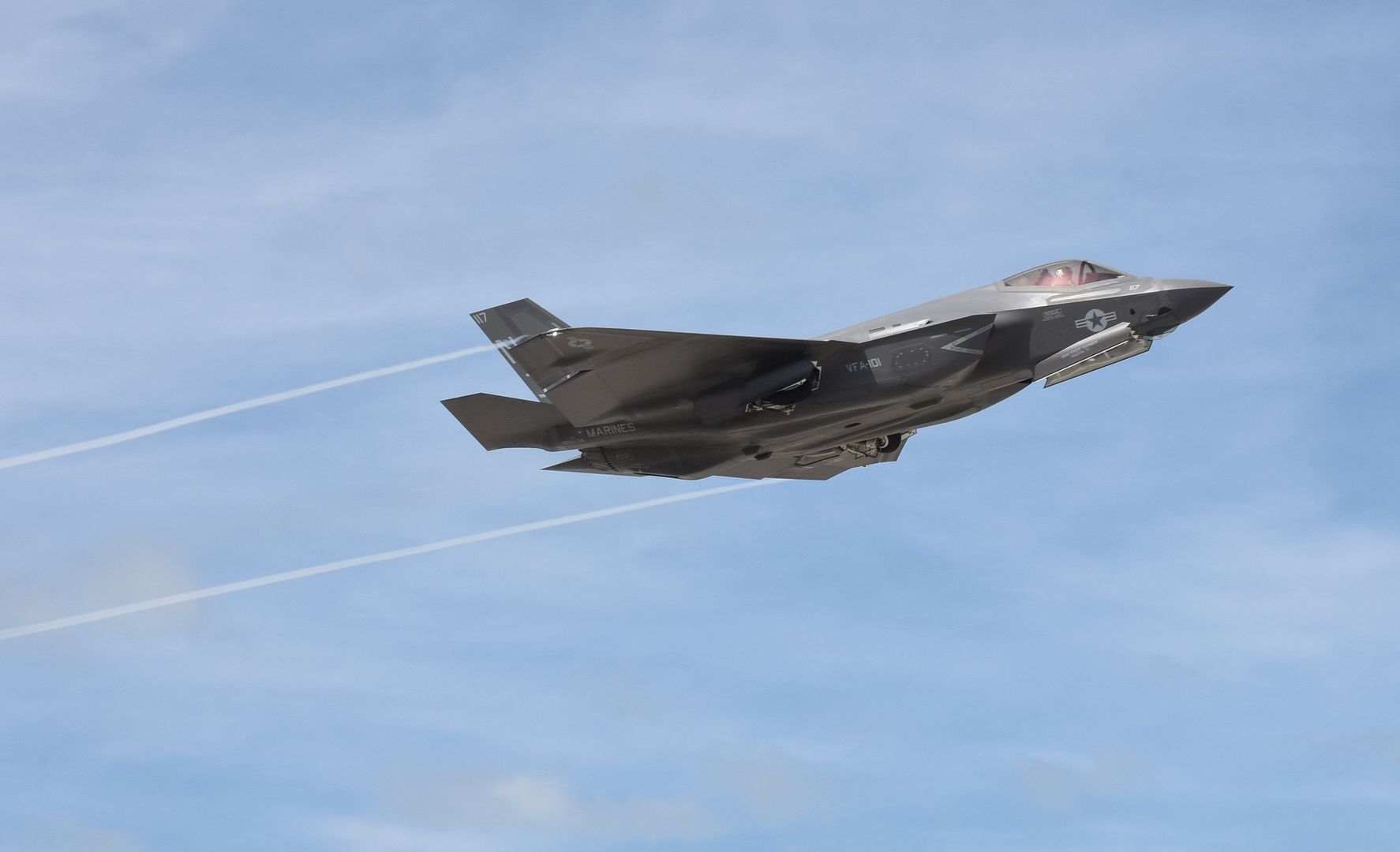
News Article / November 4, 2016
By Captain Mathew Strong
Royal Canadian Air Force (RCAF) crews, support personnel and technicians deployed to Exercise Puma Strike at Marine Corps Air Station in Miramar, California, on October 28, 2016.
Flying operations for the exercise began on October 31 and continue to November 23, 2016.
Twice a year, 410 Tactical Fighter (Operational Training) Squadron, alongside various elements of 4 Wing Cold Lake, Alberta, and the RCAF, deploy to locations in the southern United States to conduct warm weather training exercises.
?This deployment is an outstanding opportunity for the RCAF?s fighter force to conduct worthwhile, uninhibited training in an operating environment different from our own,? said Colonel Paul Doyle, the commander of 4 Wing. ?This is a controlled way to expose our people to new agencies and procedures which will surely expand their knowledge and be put to use when deployed outside Canada.?
This particular rendition of Exercise Puma includes a combination of 220 pilots, crews, technicians and support personnel from 410 Squadron, 401, 409, 425 and 433 Tactical Fighter Squadrons, staff and students from 10 Field Technical Training Squadron, air weapons controllers from 42 Radar Squadron and support personnel from other Cold Lake units.
The exercise also includes participation by a CC-130T Hercules air-to-air refueler based in 17 Wing Winnipeg and air combat systems officers (ACSO) from 414 Electronic Warfare Squadron in Ottawa, Ontario.
The ACSOs fly in the rear seat of contracted Dornier Alpha Jets operated by Discovery Air Defence Services Inc. that provide realistic threat simulation to CF-188 Hornet pilots.
?Flying away from Cold Lake offers our people a chance to step up and overcome the challenges inherent with operating away from home, which is something we do when on deployed operations,? added Colonel Doyle.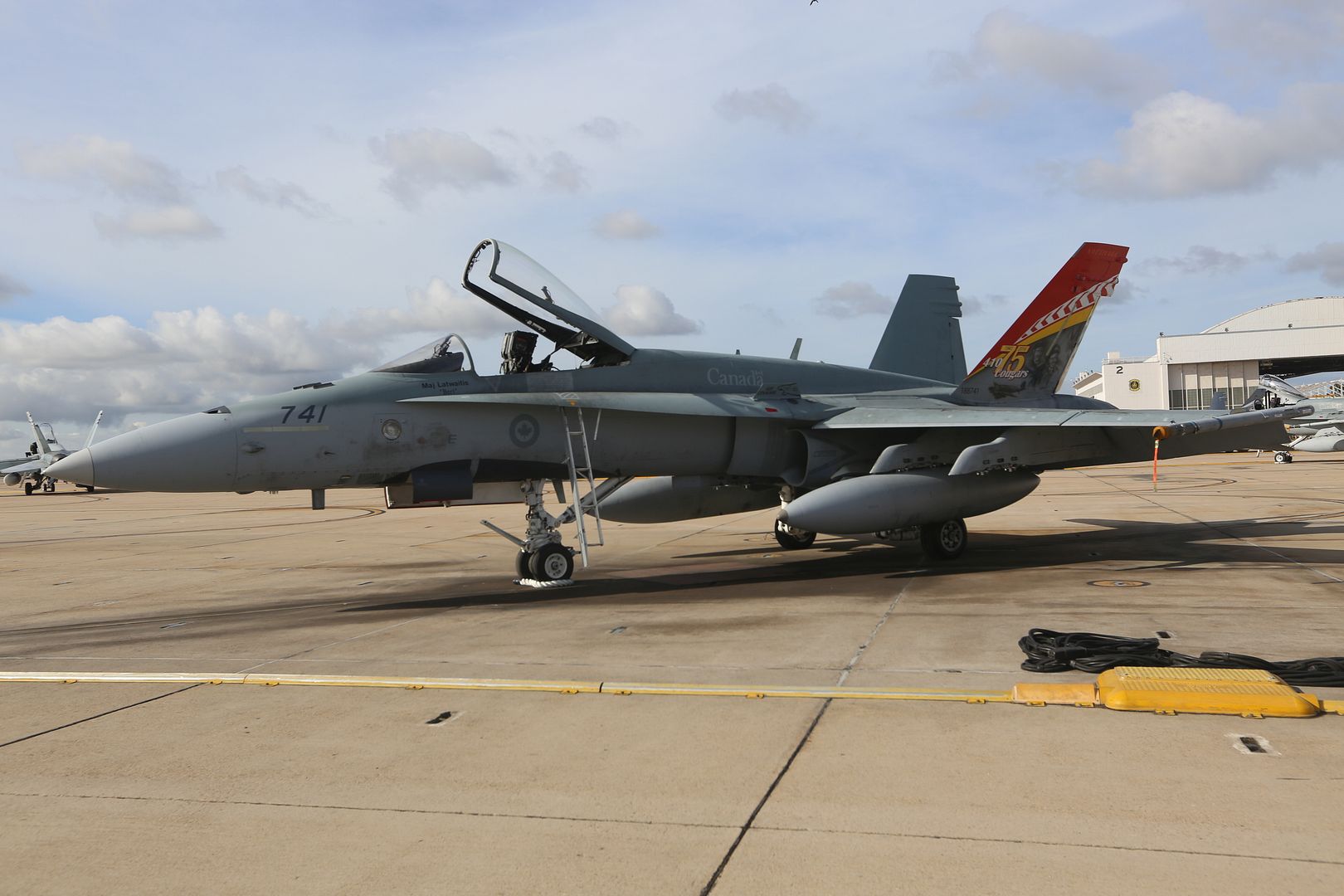
Although training and operations are still conducted year-round in Cold Lake, multiple days of low cloud, poor visibility and reduced runway surface conditions tend to affect training timelines.
?Exercise Puma Dtrike is our opportunity to conduct an incredible amount of flying in a relatively short period of time,? said Lieutenant-Colonel Seane Doell, commanding officer of 410 Squadron.
?The favourable weather conditions and deployed setting have historically enabled 410 Tactical Fighter (Operational Training) Squadron to achieve a sortie generation rate approximately 300 per cent greater than is typically possible at home at this time of year.?
Deploying such a large contingent of personnel, equipment and aircraft to a new location for three to four weeks of operations is also a unique and significant logistics challenge, presenting a secondary training opportunity for all those involved.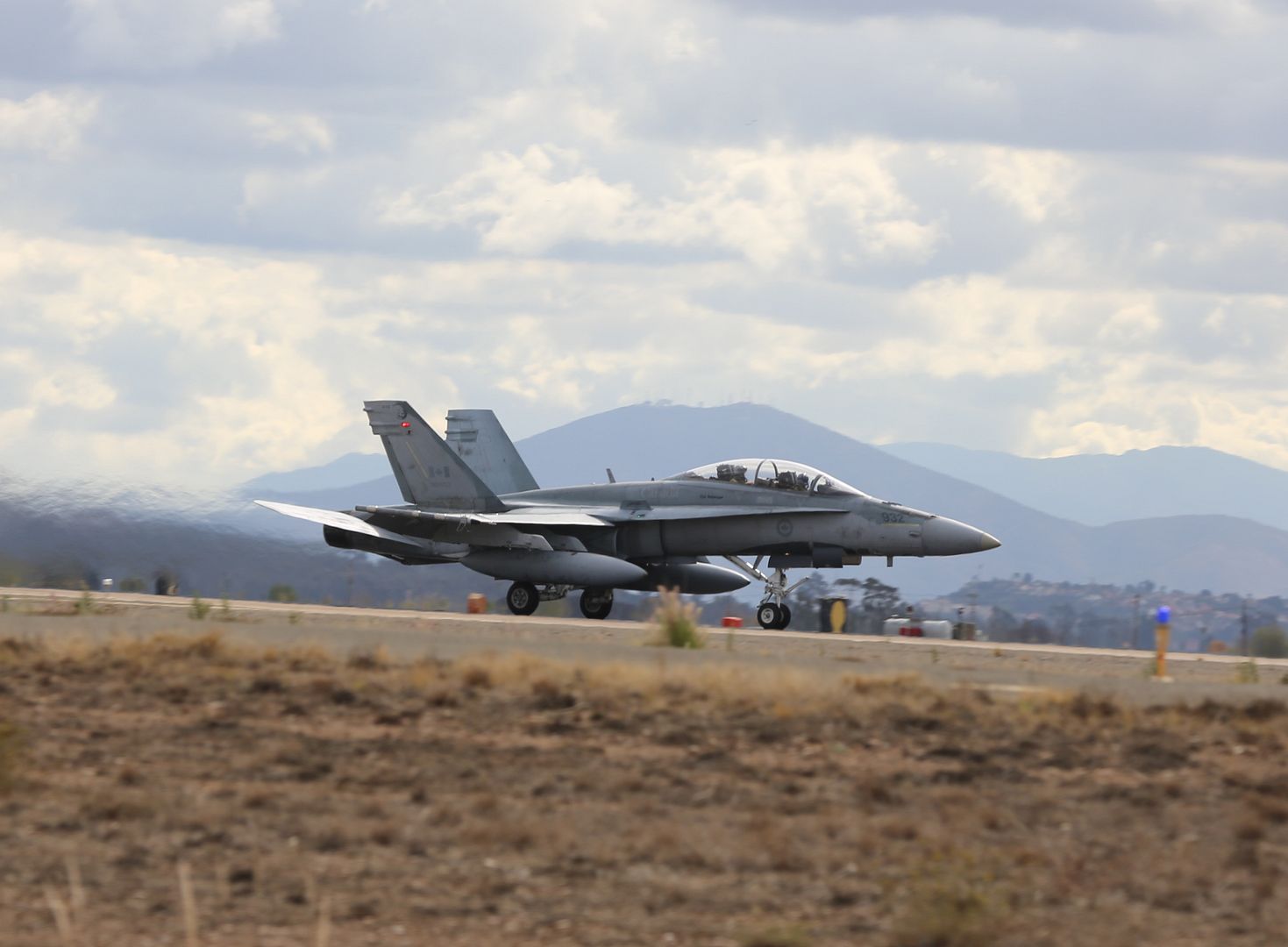
November 4, 2016 Toronto Bombardier Inc., Business Aircraft, Press Release
Bombardier Business Aircraft today announced that its segment-defining Global 7000 aircraft program completed the successful maiden flight of its first flight test vehicle (FTV1). This first flight marks the start of a flight test program for the newest member of Bombardier?s flagship Global aircraft family, which is scheduled to enter into service in the second half of 2018.
The Global 7000 flight test vehicle took off from Bombardier?s facility in Toronto under the command of Captain Ed Grabman, assisted by his co-pilot, Jeff Karnes and Flight Test Engineer Jason Nickel under clear conditions at 10:25 a.m. EST.
Dedicated to testing basic system functionality and assessing the handling and flying qualities of the aircraft, today?s flight lasted approximately 2 hours and 27 minutes, during which all flight controls were exercised, and the systems and aircraft performed as expected. The flight crew conducted a gradual climb to 20,000 feet (6,096 m) and the aircraft reached a planned test speed of 240 knots.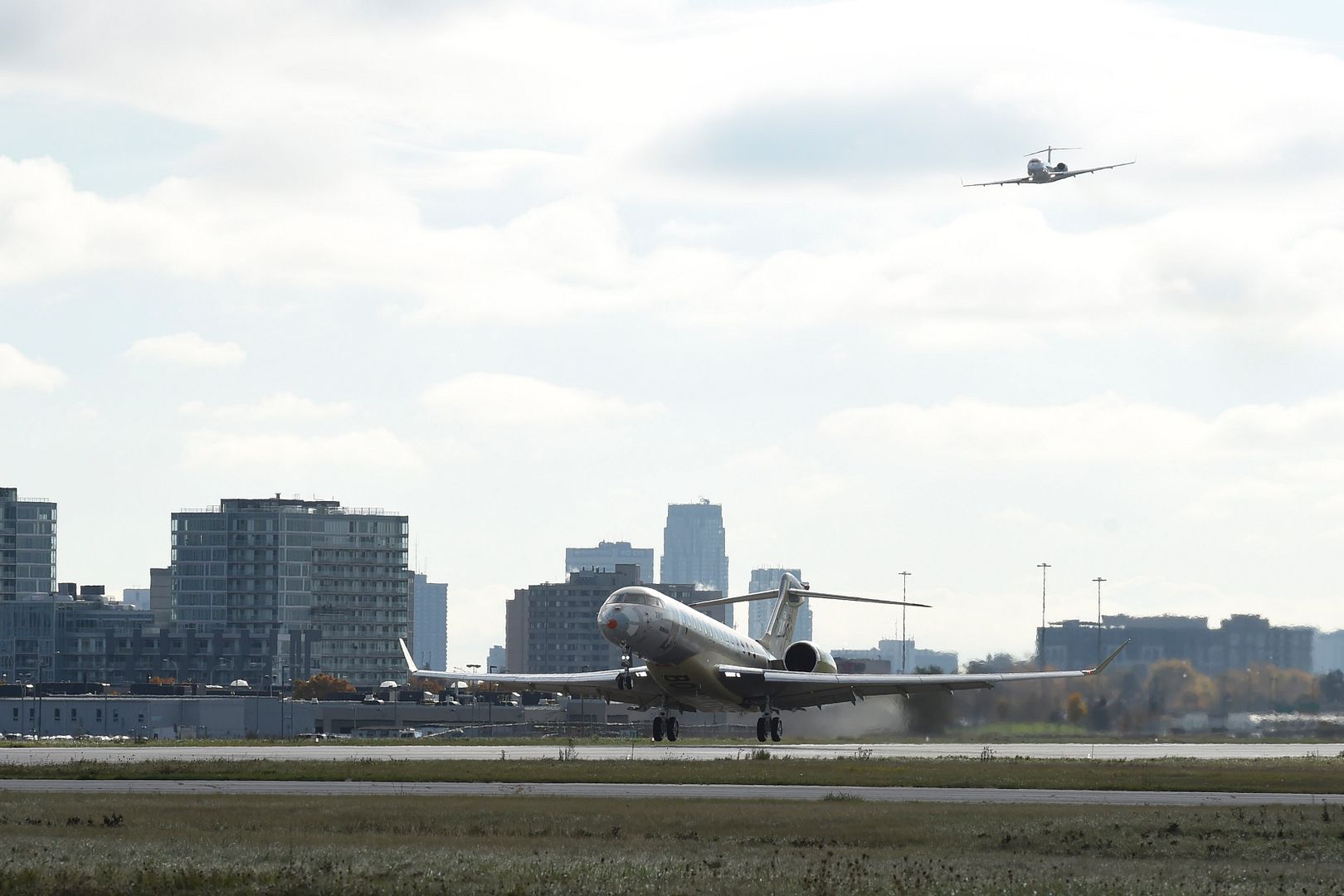
"The first flight is the culmination of an incredible amount of knowledge and experience from our dedicated employees, partners and suppliers,? said David Coleal, President, Bombardier Business Aircraft. ?This is a very proud moment for Bombardier and confirms the Global 7000 aircraft program development is on schedule. It is the industry?s most innovative and uniquely designed business jet and the only aircraft on the market to offer four living spaces for unparalleled comfort and flexibility, creating an unforgettable experience for our customers. The Global 7000 business jet?s impressive capabilities promise to establish a whole new category for large business jets,? he added.
?This is a great day for Bombardier and a very proud moment for the thousands of employees who made this significant milestone a reality,? said Michel Ouellette, Senior Vice President, Global 7000 and Global 8000 program, Bombardier Business Aircraft. ?Hard work and dedication from the entire team, including our suppliers, went into this amazing milestone of the development program. With today?s first flight successfully completed, all teams remain focused on meeting the program?s development and certification schedule and the aircraft?s entry-into-service in the second half of 2018.?
?It was very exciting to see our Global 7000 aircraft take to the skies,? said Fran?ois Caza, Vice President, Product Development and Chief Engineer, Bombardier Product Development Engineering. ?Our world-class product development team, supported by our suppliers, followed our rigorous first flight readiness process, which included systems, structures and aerodynamics technical reviews, as well as the extensive use of test rigs and state-of-the-art simulation. The successful conclusion of this process clears the way for the start of our comprehensive flight test program leading to certification.?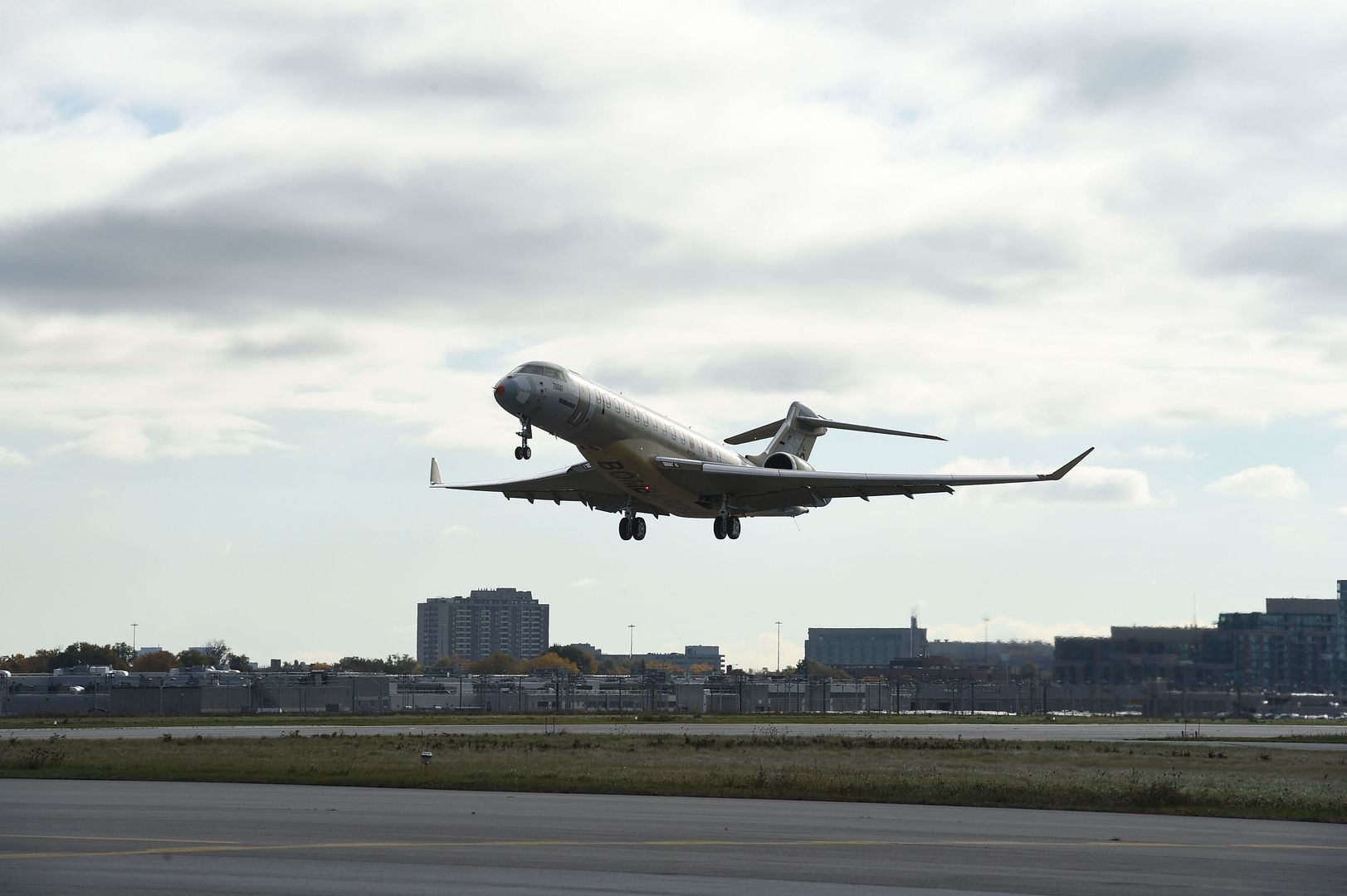
About the Global 7000 aircraft
The Global 7000 business jet is uniquely designed from the inside out to deliver a cabin experience like no other. The first and only business jet to offer four unique living spaces and a dedicated crew area, the Global 7000 aircraft will set the standard for a new category of large business jets, offering unparalleled comfort and interior design flexibility. Engineered with a next-generation transonic wing design, the Global 7000 aircraft offers not only a smooth flight, but also a steep approach capability and short field performance, coupled with highly efficient engines, the largest cabin and the most advanced cockpit, to get you closer to your final destination.
The Global 7000 business aircraft will also be able to connect London to Singapore* or New York City to Dubai* non-stop, and will feature a maximum operating speed of M 0.925*. Passengers flying on the Global 7000 business jet will experience an impressive long-range capability of 7,400 NM (13,705 km) at M 0.85 with eight passengers.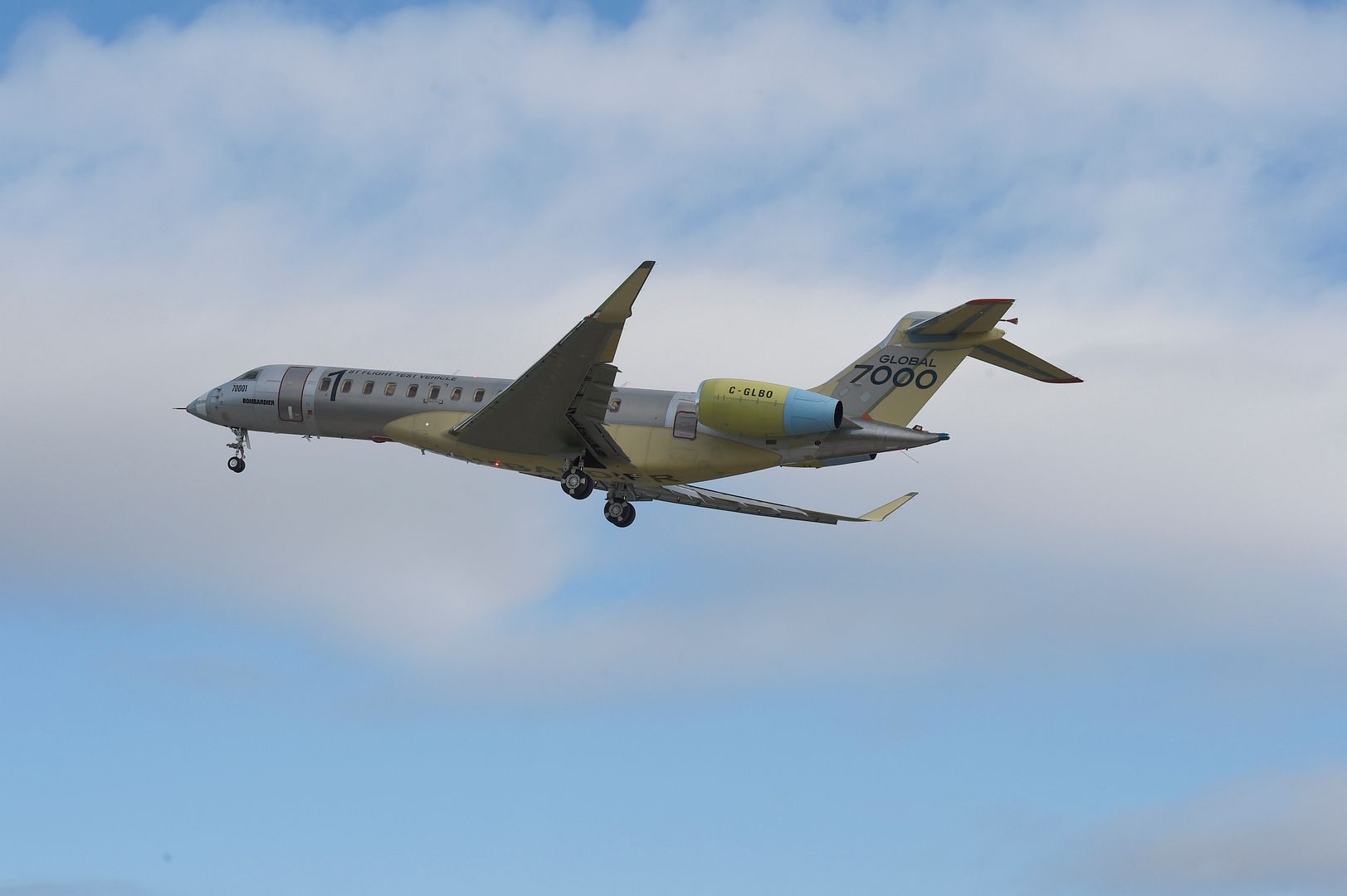
-
 Main AdminAfter months of planning, Typhoons piloted and supported by II(AC) Sqn personnel have landed at Osan Air Base in the Republic of Korea for Exercise Invincible Shield. The one week exercise will see RAF jet fighters flown both with and against their Republic of Korea and US counterparts.
Main AdminAfter months of planning, Typhoons piloted and supported by II(AC) Sqn personnel have landed at Osan Air Base in the Republic of Korea for Exercise Invincible Shield. The one week exercise will see RAF jet fighters flown both with and against their Republic of Korea and US counterparts.
In charge of flying operations, US Air Force Colonel Larry Card said, ?We?re putting these three nations together and in the end we?re going to be better than anyone of us on our own could ever be. The RAF is always very aggressive so we?re looking forward to a good scrap in the air.?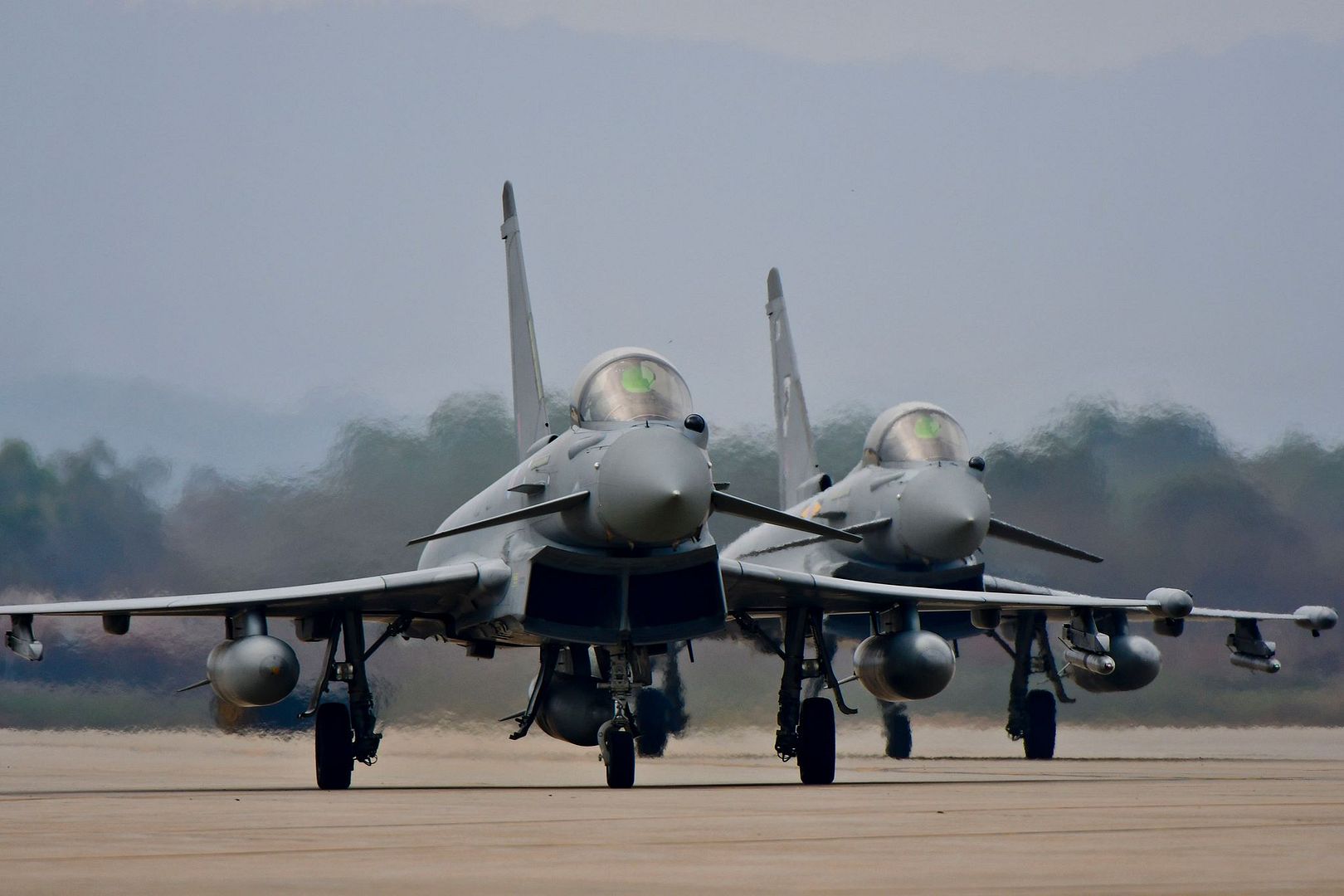
-
 Main AdminThree UH-60 Blackhawk helicopters, carrying the U.S. Army Chief of Staff, Gen. Mark A. Milley, arrive in the box at the National Training Center, Fort Irwin, Calif, Nov. 6, 2016. During his visit with 11th Armored Cavalry Regiment Blackhorse Troopers, Milley offered insight about the future of the Army, the importance of the National Training Center, and the value of finishing a college education. (U.S. Army photo by Pvt. Austin Anyzeski, 11th ACR)
Main AdminThree UH-60 Blackhawk helicopters, carrying the U.S. Army Chief of Staff, Gen. Mark A. Milley, arrive in the box at the National Training Center, Fort Irwin, Calif, Nov. 6, 2016. During his visit with 11th Armored Cavalry Regiment Blackhorse Troopers, Milley offered insight about the future of the Army, the importance of the National Training Center, and the value of finishing a college education. (U.S. Army photo by Pvt. Austin Anyzeski, 11th ACR)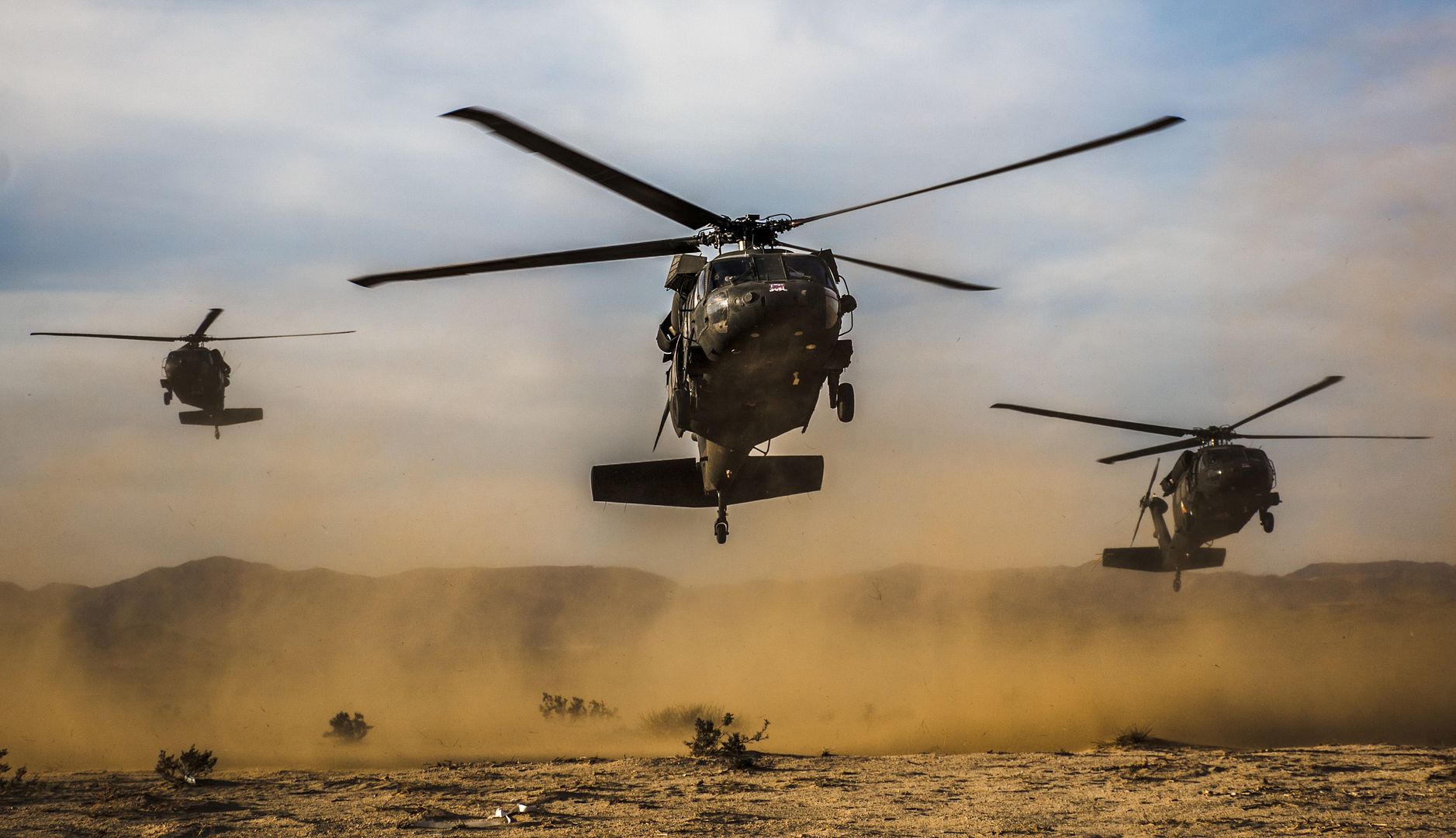
A Royal Air Force Eurofighter Typhoon FRG4 takes off at Osan Air Base, Republic of Korea, Nov. 7, 2016. The RAF deployed the largest number of assets on the Korean Peninsula since the Korean War during Invincible Shield, an interoperability exchange, from Nov. 1 ? 10. (U.S. Air Force photo by Senior Airman Victor J. Caputo)
Air Force One sits on the parking ramp of Pease Air National Guard Base, N.H. Nov. 7, 2016. President Barak Obama greeted Airman and visitors earlier prior to his visit to the University of New Hampshire. (U.S. Air National Guard photo by Senior Airman Ashlyn J. Correia)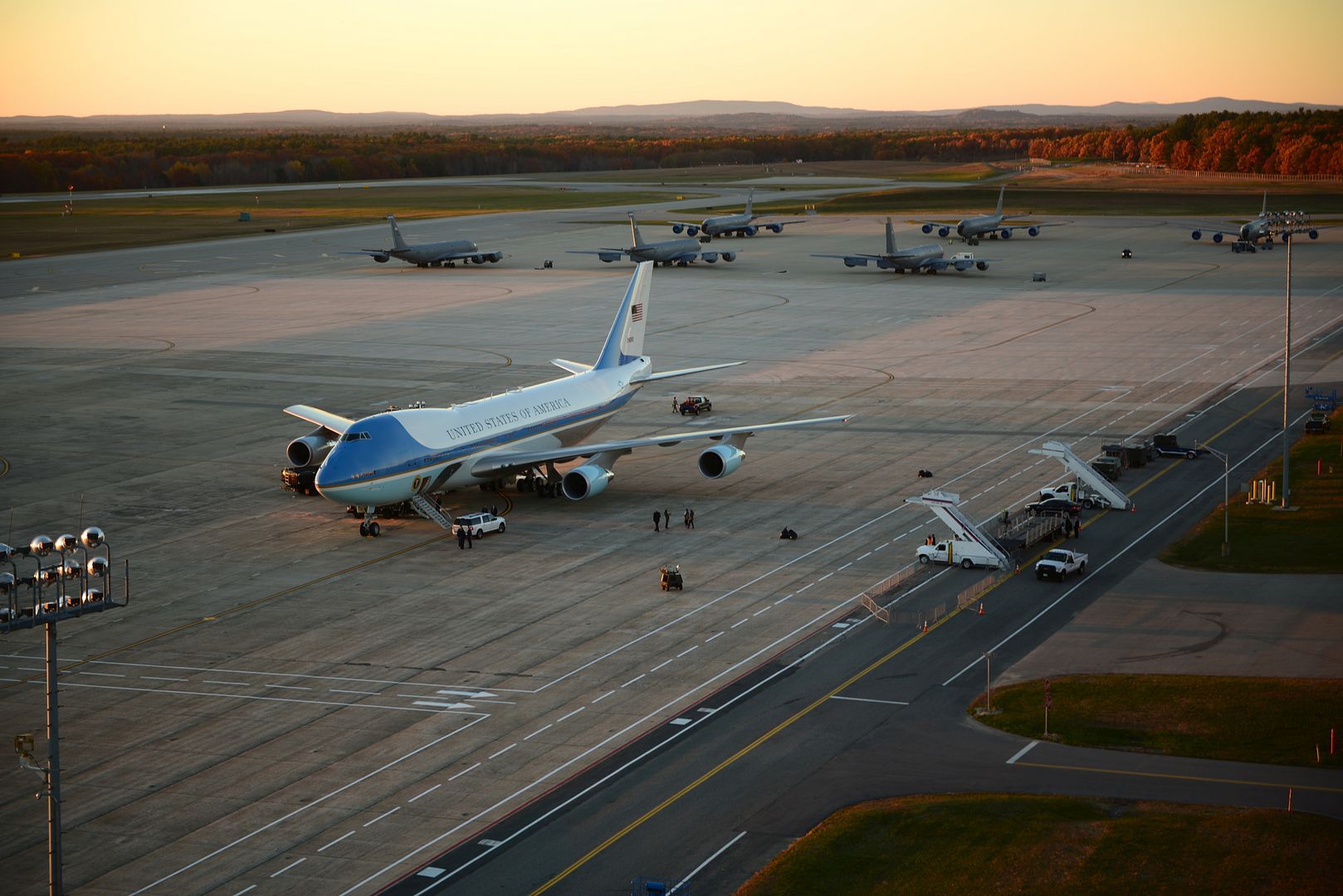
A Royal Air Force Eurofighter Typhoon FGR4 taxis on the flightline before takeoff at Osan Air Base, Republic of Korea, Nov. 8, 2016. The RAF, U.S. and ROK air forces participated in Invincible Shield, an interoperability exchange, which marked the first time the RAF has fielded aircraft on the Korean Peninsula since the Korean War. (U.S. Air Force photo by Senior Airman Dillian Bamman)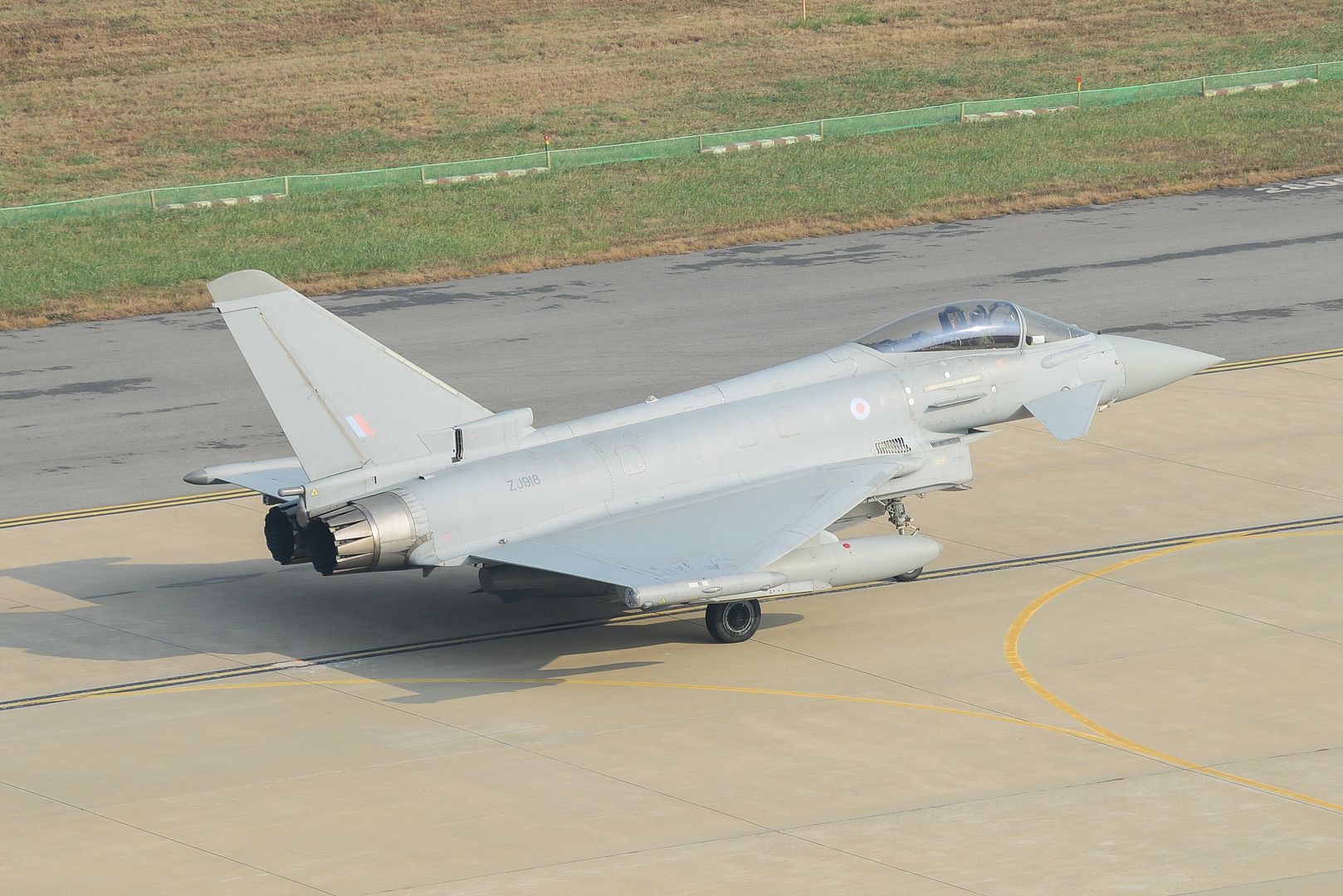
A United Kingdom Royal Air Force Typhoon FGR4 lands during Invincible Shield on Osan Air Base, Republic of Korea, Nov. 8, 2016. The intent of Invincible Shield is to bolster the strong partnership between the RoK, the United States and the United Kingdom while improving the combat capability in the Pacific region. (U.S. Air Force photo by Tech. Sgt. Rasheen Douglas)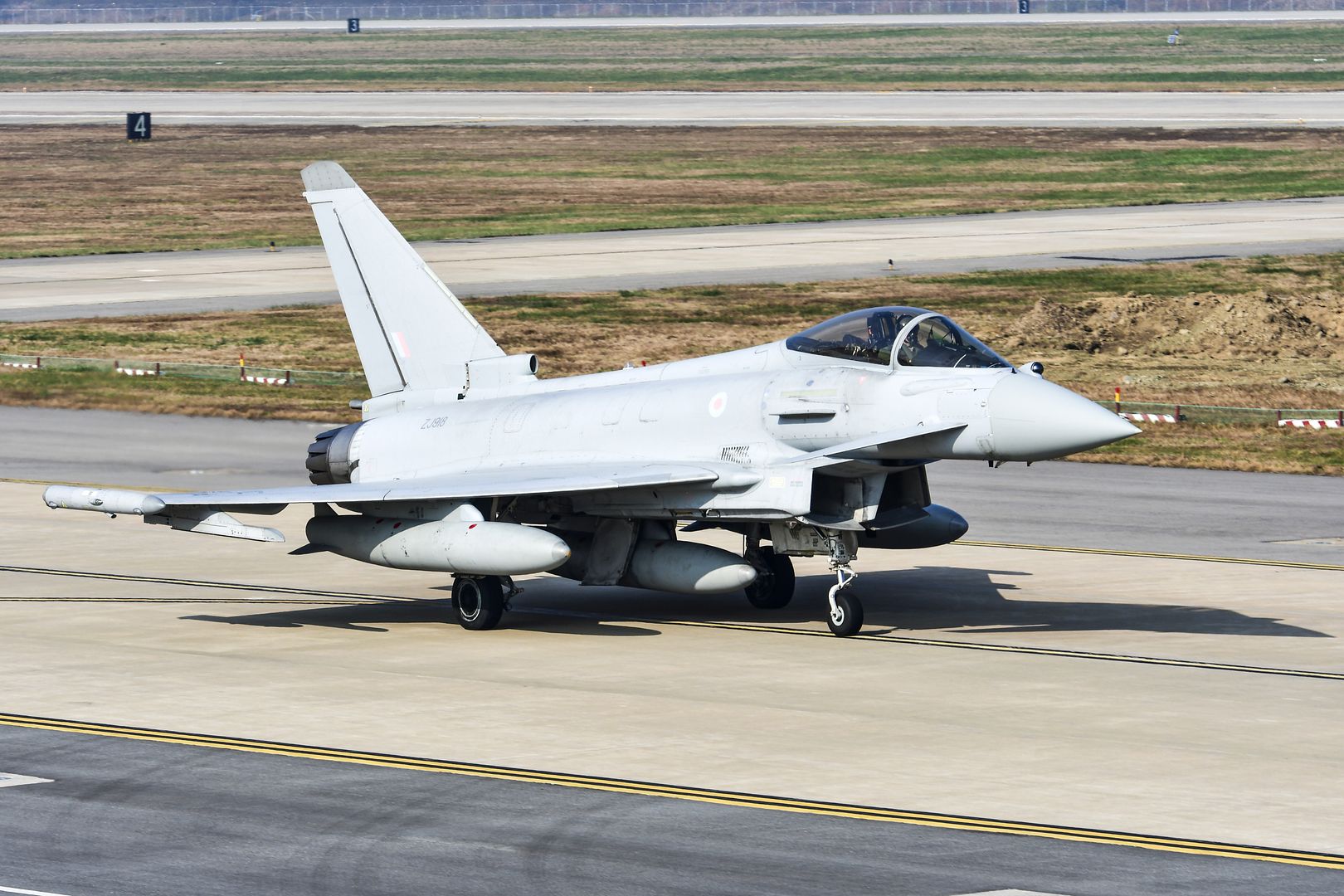
A United Kingdom Royal Air Force Typhoon lands during Invincible Shield on Osan Air Base, Republic of Korea, Nov. 8, 2016. The intent of Invincible Shield is to bolster the strong alliance between the RoK, the United States and the United Kingdom while improving the combat capability in the Pacific region. (U.S. Air Force photo by Staff Sgt. Jonathan Steffen)
A Republic of Korea Air Force F-15K Slam Eagle performs a flyover during Invincible Shield on Osan Air Base, Republic of Korea, Nov. 8, 2016. Invincible Shield is an exchange designed to improve the interoperability between the Republic of Korea, United States and the United Kingdom. (U.S. Air Force photo by Staff Sgt. Jonathan Steffen)
U.S. Air Force F-16 Fighting Falcons, a Republic of Korea Air Force F-15K Slam Eagle and a United Kingdom Royal Air Force Typhoon FGR4 fly in formation during Invincible Shield on Osan Air Base, Republic of Korea, Nov. 8, 2016. The intent of Invincible Shield is to bolster the interoperability between the RoK, the U.S. and United Kingdom while improving combat capability in the Pacific region. (U.S. Air Force photo by Staff Sgt. Jonathan Steffen)
A Royal Air Force Eurofighter Typhoon FRG4, U.S. Air Force F-16 Fighting Falcon, and a Republic of Korea air force F-16 and F-15K Slam Eagle fly in formation during Invincible Shield on Osan Air Base, Republic of Korea, Nov. 7, 2016. The intent of Invincible Shield is to bolster the interoperability between the RoK, the U.S. and United Kingdom while improving combat capability in the Pacific region. (DoD photo by Chief Master Sgt. Kim, Kyeong Ryul, Republic of Korea air force)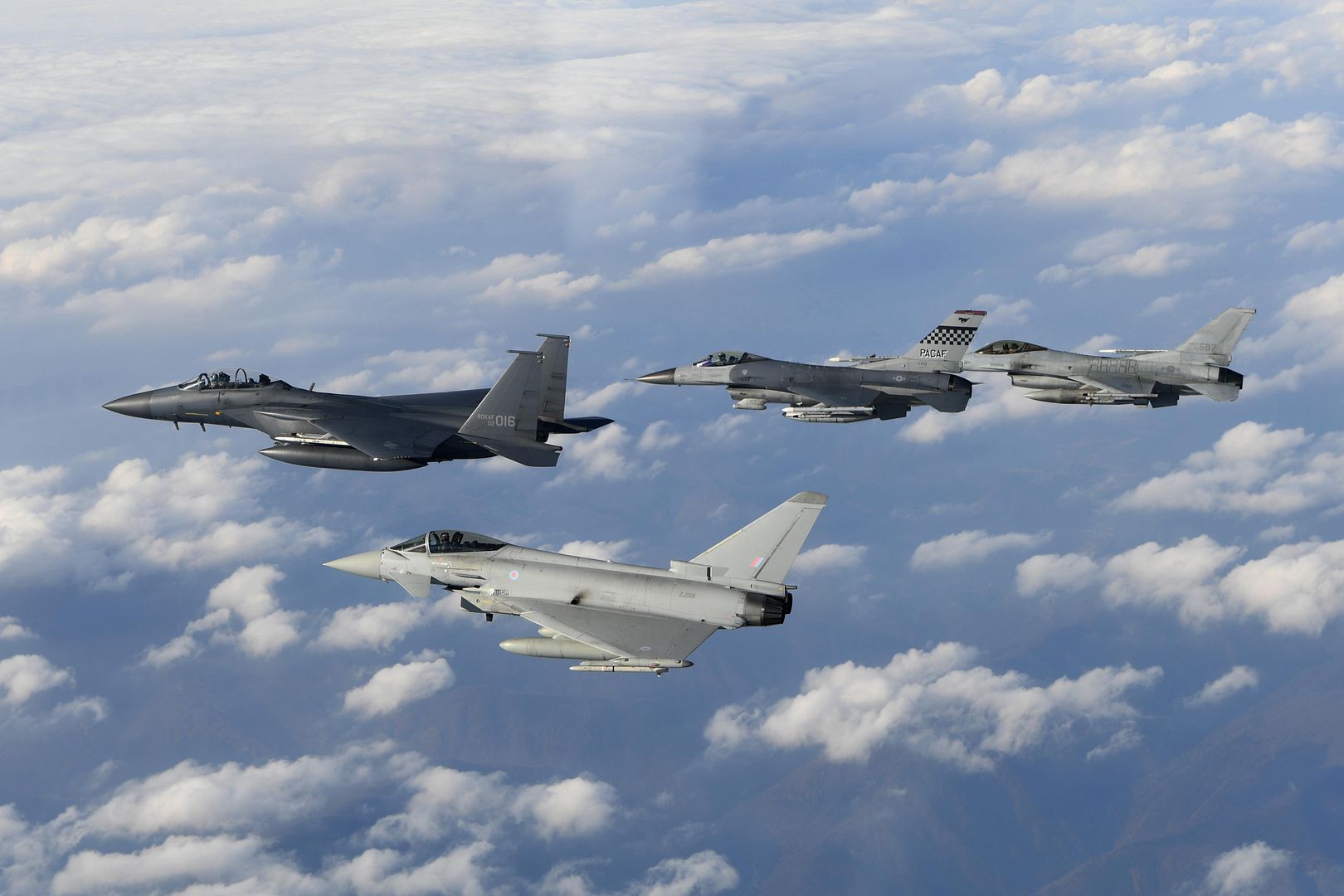
-
 Main AdminA Romanian Air Force MIG 21 jet fly?s over a 5th Battalion 7th Air Defense Artillery ?Patriot? missile site during training at a ?Patriot Shock? exercise in Capu Midia, Romania on November 7, 2016. The weeklong exercise tests the unit?s quick response deployment readiness and increases joint interoperability with ?Patriot? missile systems and their Romanian partners. (DoD News photo's by Tech. Sgt. Brian Kimball)
Main AdminA Romanian Air Force MIG 21 jet fly?s over a 5th Battalion 7th Air Defense Artillery ?Patriot? missile site during training at a ?Patriot Shock? exercise in Capu Midia, Romania on November 7, 2016. The weeklong exercise tests the unit?s quick response deployment readiness and increases joint interoperability with ?Patriot? missile systems and their Romanian partners. (DoD News photo's by Tech. Sgt. Brian Kimball)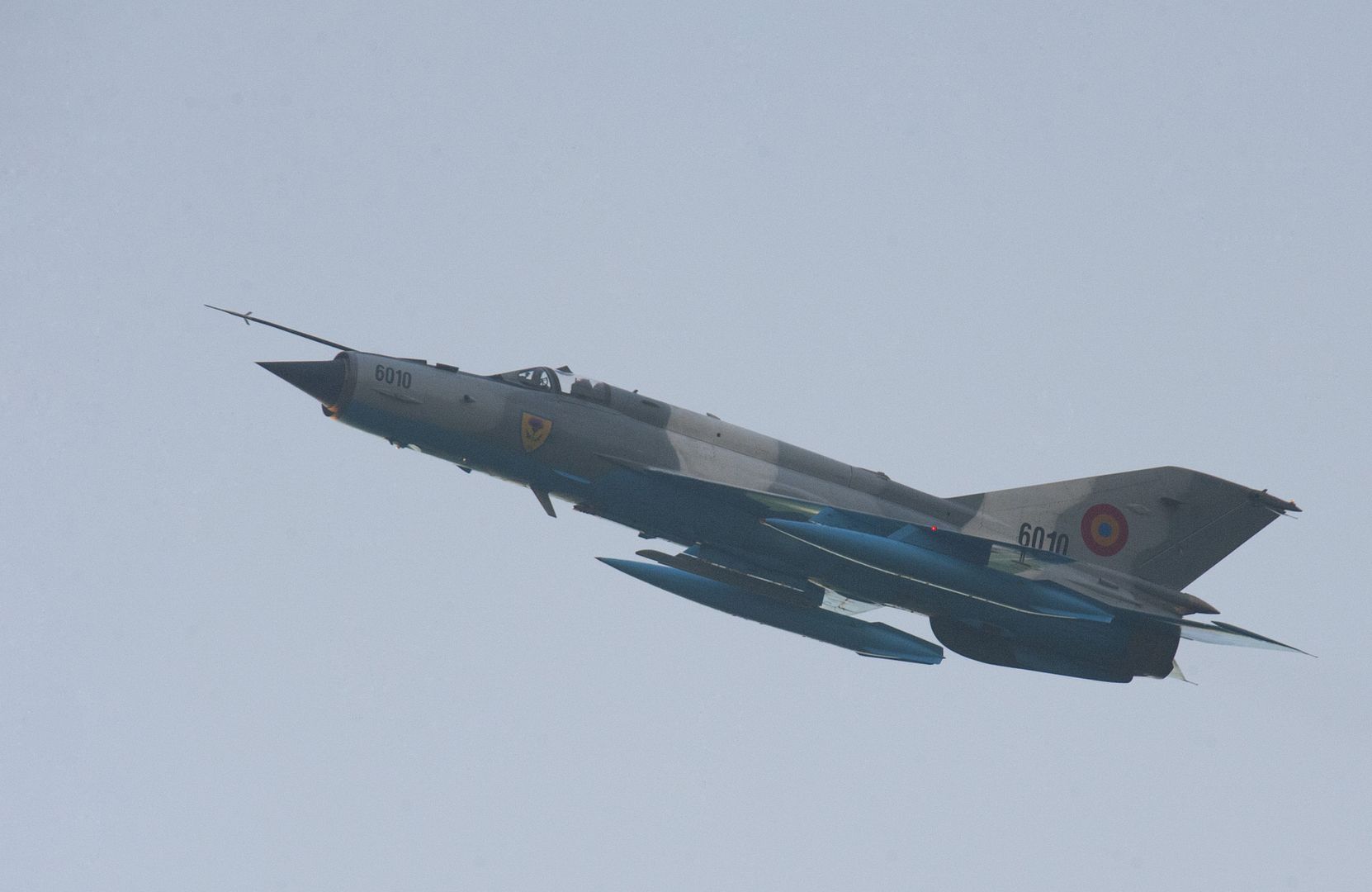
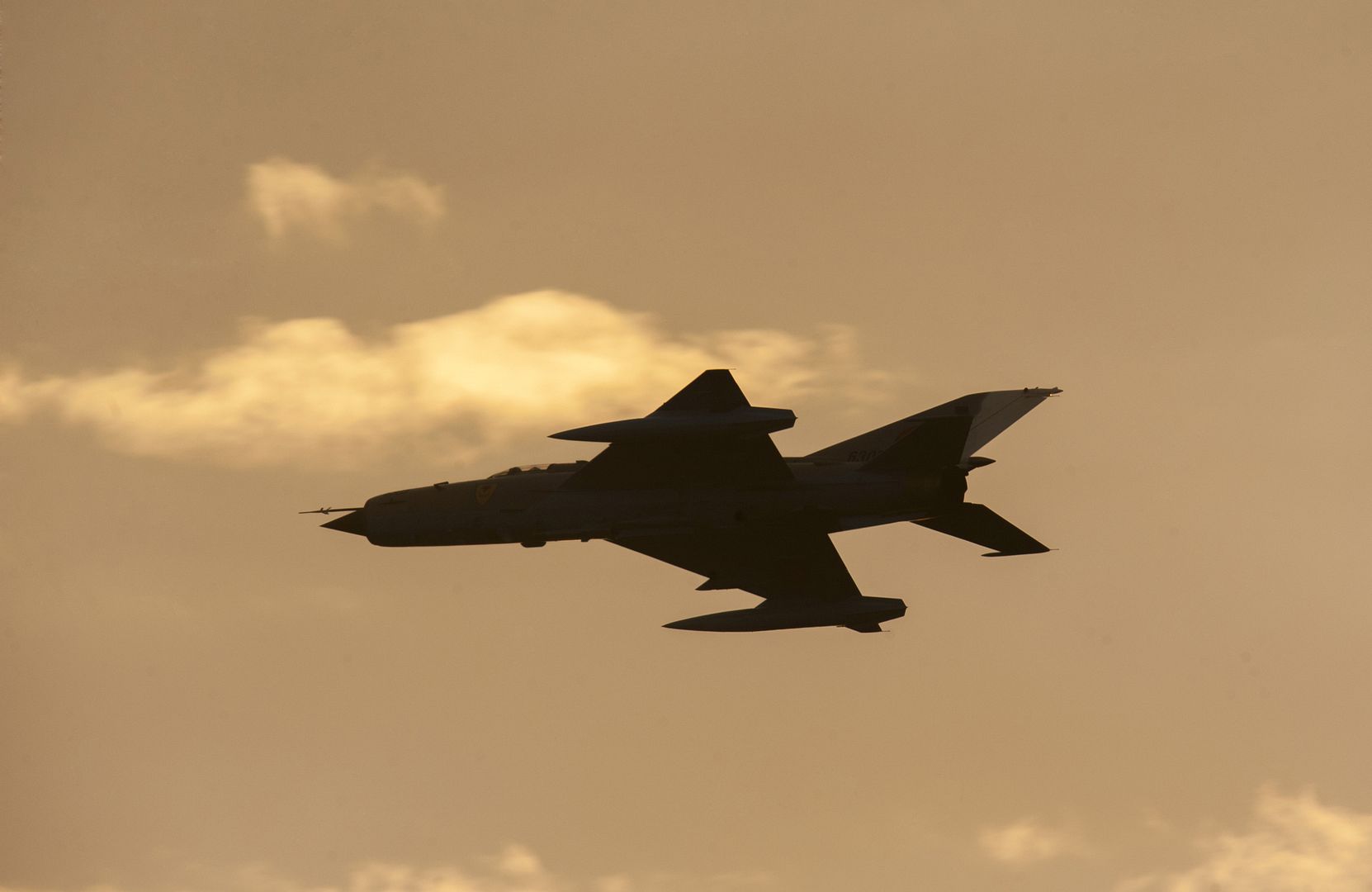
Sailors assigned to the amphibious assault ship USS America (LHA 6) and F-35B Lightning II Marine Corps personnel prepare to equip the aircraft with inert 500-pound GBU-12 Paveway II laser-guided test bombs during flight operations. The F-35B short takeoff/vertical landing (STOVL) variant is the world's first supersonic STOVL stealth aircraft. America, with Marine Operational Test and Evaluation Squadron 1 (VMX-1), Marine Fighter Attack Squadron 211 (VMFA-211) and Air Test and Evaluation Squadron 23 (VX-23) embarked, are underway conducting operational testing and the third phase of developmental testing for the F-35B Lightning II aircraft, respectively. The tests will evaluate the full spectrum of joint strike fighter measures of suitability and effectiveness in an at-sea environment. U.S. Navy photo by Petty Officer 3rd Class Kyle Goldberg (Released)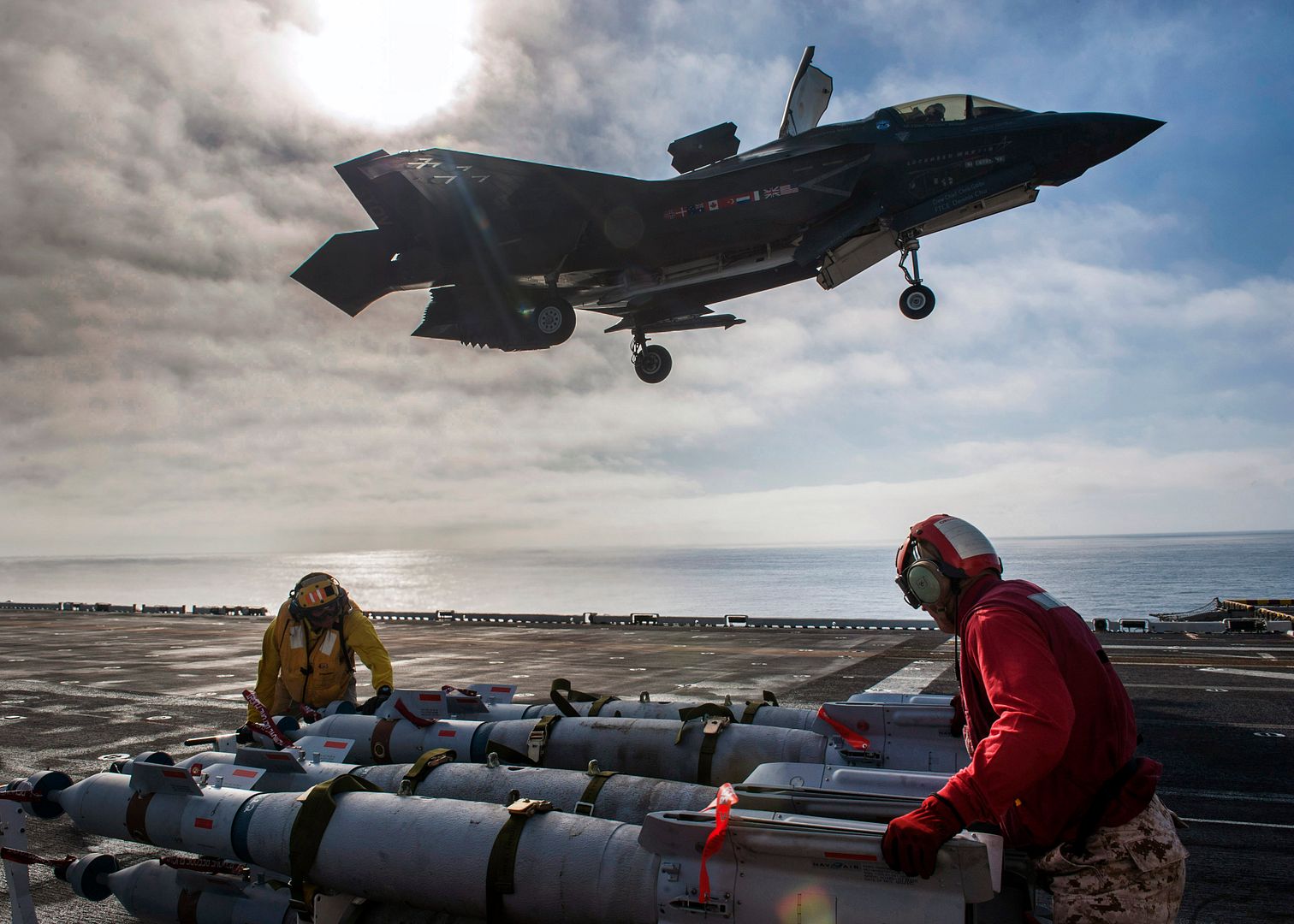
8 November 2016 Press Release
Air Astana, Kazakhstan?s flag carrier, has taken delivery of its first A320neo at Airbus headquarters in Toulouse in the presence of airline executives and government officials. The aircraft leased from Air Lease Corporation is part of a deal announced at Farnborough Airshow 2015 for 11 A320neo Family aircraft. The A320neo will join Air Astana?s Airbus fleet of 13 A320 Family aircraft, and will be operated on domestic and international network.
Air Astana?s A320neo is powered by Pratt & Whitney engines and features a two class cabin layout, seating 16 passengers in business and 132 in economy.
"The A320 Family has proven to be a success in service with Air Astana over the past ten years, for its passenger appeal, low operating costs and reliability" said Peter Foster, President and CEO, of Air Astana. " The A320neo Family offers significant improvements to passenger comfort, fuel efficiency and operating capability, particularly on longer range routes to Asia and Europe.?
?We congratulate Air Astana on their first A320neo delivery. Becoming the first operator of the world?s most advanced single-aisle aircraft in the CIS. The airline will not only benefit from the commonality with their existing A320 Family fleet but also from its unprecedented passenger comfort and fuel efficiency ?said John Leahy Airbus Chief Operating Officer, Customers.
The A320 Family is the world?s best-selling single aisle product line with more than 12,750 orders since launch and more than 7,200 aircraft delivered to more than 300 operators worldwide. The A320neo Family incorporates latest technologies including new generation engines and Sharklet wing tip devices, which together deliver more than 15 percent in fuel savings from day one and 20 percent by 2020.
7 November 2016
BAE Systems welcomes today?s announcement from the F-35 Joint Program Office on the global Maintenance, Repair, Overhaul & Upgrade (MRO&U) services for F-35 avionics and aircraft components, and that it has chosen UK and Australia as significant repair hubs.
These global component repair assignments will until 2025 be global, after which the UK and Australia will undertake an increased scope of repairs for the European region and the Pacific region respectively.
BAE Systems will play a leading role in the work undertaken in both the UK and Australia.
Ian King, Chief Executive, BAE Systems said: ?The selection of the UK and Australia to undertake this activity is recognition of the advanced military aircraft support skills and capabilities we have in these countries. Within BAE Systems we have a strong track record of working alongside our national and international customers, and industry partners, in delivering innovative and cost effective support solutions and we look forward to bringing that experience to F-35 component MRO&U.
?BAE Systems plays a crucial role on the F-35 programme in the UK, US and Australia, and today?s announcement builds upon that contribution.?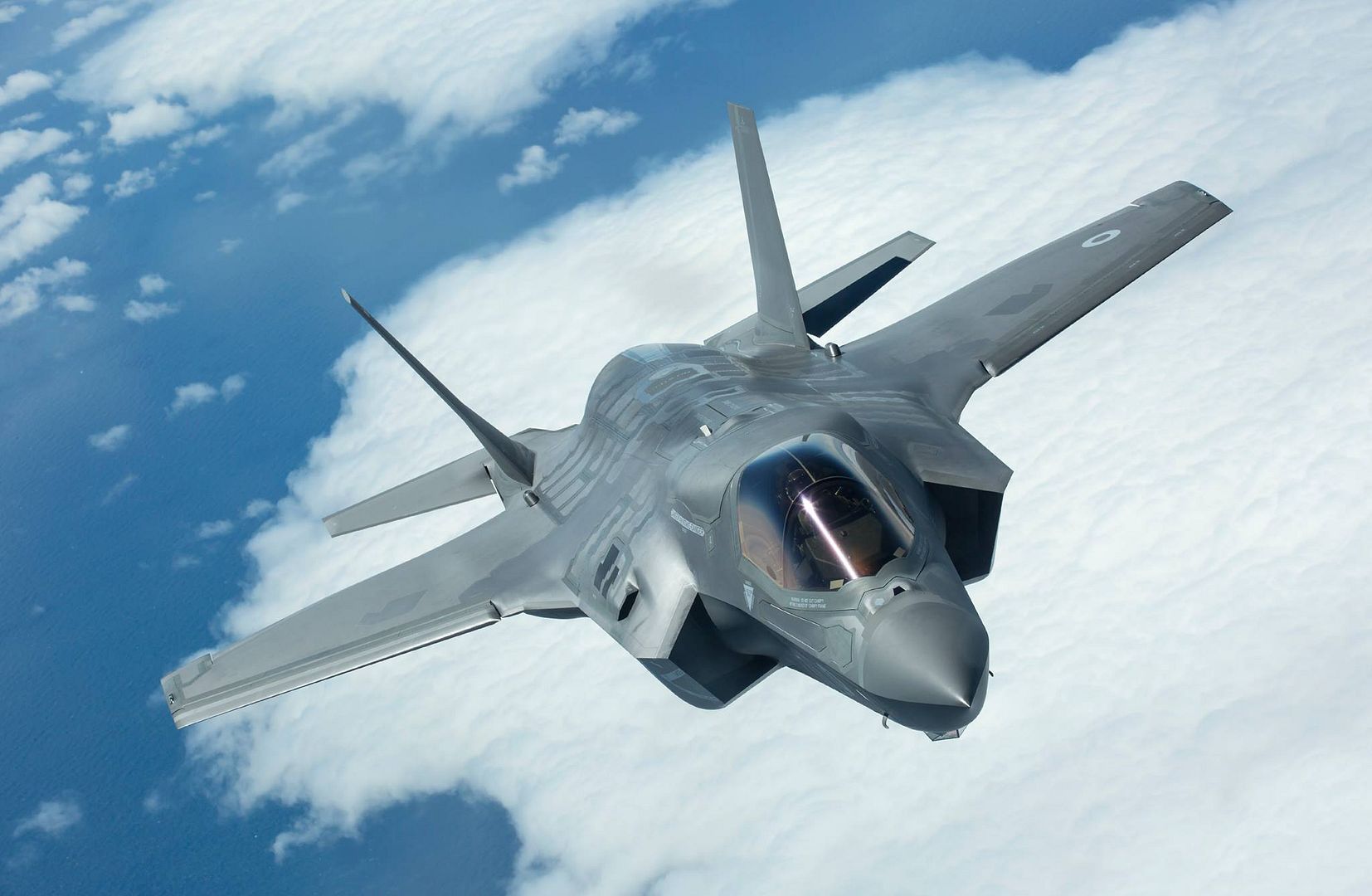
-
 Main AdminPHILIPPINE SEA (Nov. 9, 2016) A C-2A Greyhound assigned to the ?Providers? of Fleet Logistics Support Squadron (VRC) 30 launches from the flight deck of the Navy?s only forward-deployed aircraft carrier, USS Ronald Reagan (CVN 76), during Exercise Keen Sword 17 (KS17). Ronald Reagan is participating in KS17, a biennial, Chairman of the Joint Chiefs of Staff-directed, U.S. Pacific Command-sponsored field-training exercise. KS17 is designed to meet mutual defense objectives by increasing combat readiness and interoperability between U.S. forces and the Japan Self Defense Force. Ronald Reagan, the flagship of Carrier Strike Group Five (CSG 5), is on patrol in the Philippine Sea supporting security and stability in the Indo-Asia-Pacific region. (U.S. Navy photo by Petty Officer 3rd Class James Lee/Released)
Main AdminPHILIPPINE SEA (Nov. 9, 2016) A C-2A Greyhound assigned to the ?Providers? of Fleet Logistics Support Squadron (VRC) 30 launches from the flight deck of the Navy?s only forward-deployed aircraft carrier, USS Ronald Reagan (CVN 76), during Exercise Keen Sword 17 (KS17). Ronald Reagan is participating in KS17, a biennial, Chairman of the Joint Chiefs of Staff-directed, U.S. Pacific Command-sponsored field-training exercise. KS17 is designed to meet mutual defense objectives by increasing combat readiness and interoperability between U.S. forces and the Japan Self Defense Force. Ronald Reagan, the flagship of Carrier Strike Group Five (CSG 5), is on patrol in the Philippine Sea supporting security and stability in the Indo-Asia-Pacific region. (U.S. Navy photo by Petty Officer 3rd Class James Lee/Released)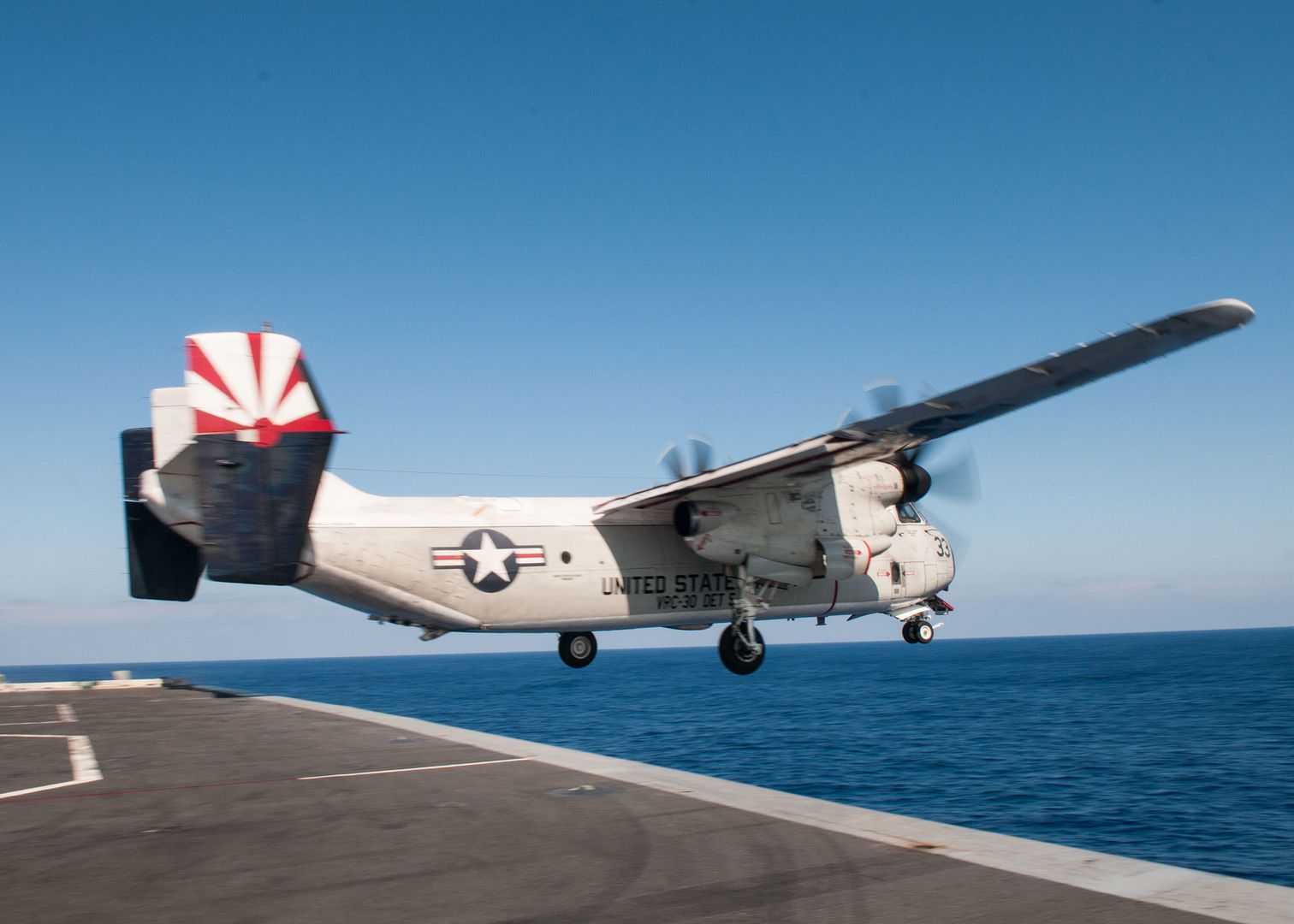
PACIFIC OCEAN (Nov. 5, 2016) An F-35B Lightning II aircraft equipped with inert 500-pound GBU-12 Paveway II laser-guided test bombs prepares for takeoff from the flight deck of amphibious assault ship USS America (LHA 6) during flight operations. The F-35B short takeoff/vertical landing (STOVL) variant is the world?s first supersonic STOVL stealth aircraft. America, with Marine Operational Test and Evaluation Squadron 1 (VMX-1), Marine Fighter Attack Squadron 211 (VMFA-211) and Air Test and Evaluation Squadron 23 (VX-23) embarked, are underway conducting operational testing and the third phase of developmental testing for the F-35B Lightning II aircraft, respectively. The tests will evaluate the full spectrum of joint strike fighter measures of suitability and effectiveness in an at-sea environment. (U.S. Navy photo by Petty Officer 3rd Class Kyle Goldberg/Released)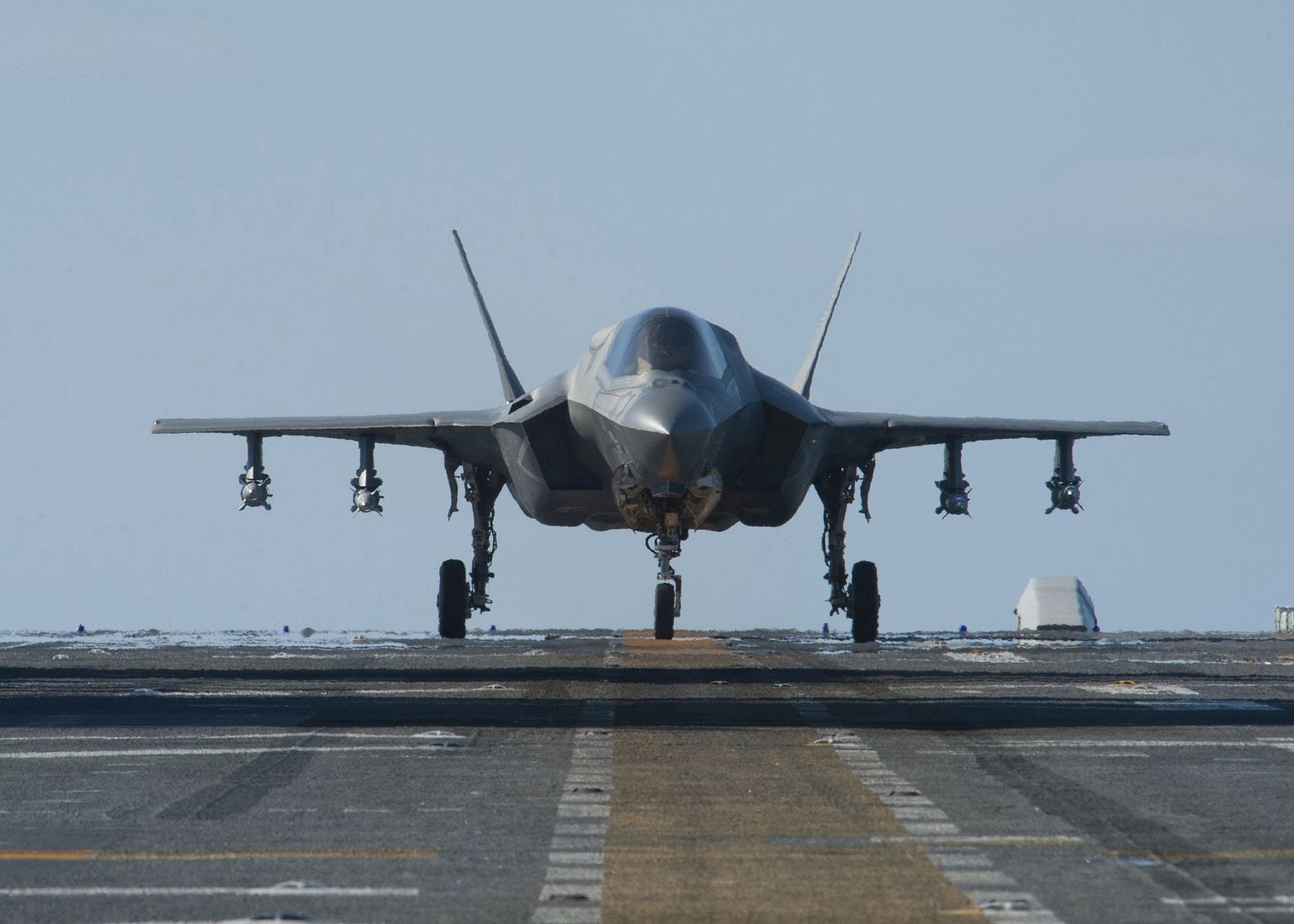
PACIFIC OCEAN (Nov. 5, 2016) An F-35B Lightning II aircraft launches from the flight deck of amphibious assault ship USS America (LHA 6) equipped with inert 500-pound GBU-12 Paveway II laser-guided test bombs during flight operations. The F-35B short takeoff/vertical landing (STOVL) variant is the world?s first supersonic STOVL stealth aircraft. America, with Marine Operational Test and Evaluation Squadron 1 (VMX-1), Marine Fighter Attack Squadron 211 (VMFA-211) and Air Test and Evaluation Squadron 23 (VX-23) embarked, are underway conducting operational testing and the third phase of developmental testing for the F-35B Lightning II aircraft, respectively. The tests will evaluate the full spectrum of joint strike fighter measures of suitability and effectiveness in an at-sea environment. (U.S. Navy photo by Petty Officer 3rd Class Kyle Goldberg/Released)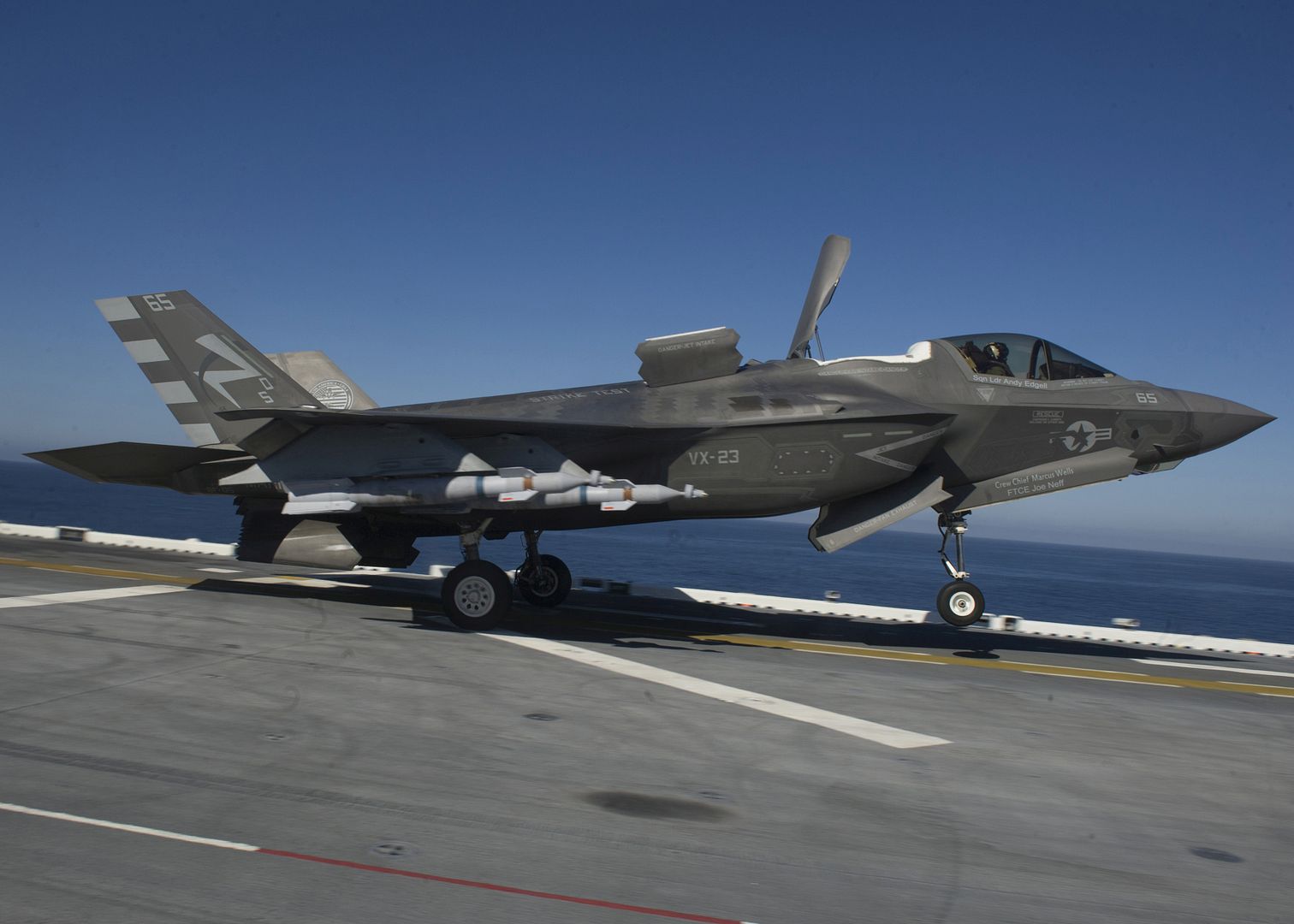
PHILIPPINE SEA (Nov. 9, 2016) An F/A-18E Super Hornet assigned to the ?Eagles? of Strike Fighter Squadron (VFA) 115 lands on the flight deck of the USS Ronald Reagan (CVN 76), during Exercise Keen Sword 2017 (KS17). Ronald Reagan is participating in KS17, a biennial, Chairman of the Joint Chiefs of Staff-directed, U.S. Pacific Command-sponsored field-training exercise. KS17 is designed to meet mutual defense objectives by increasing combat readiness and interoperability between U.S. forces and the Japan Self Defense Force. Ronald Reagan, the flagship of Carrier Strike Group Five (CSG 5), is on patrol in the Philippine Sea supporting security and stability in the Indo-Asia-Pacific region. (U.S. Navy photo by Petty Officer 3rd Class James Lee/Released)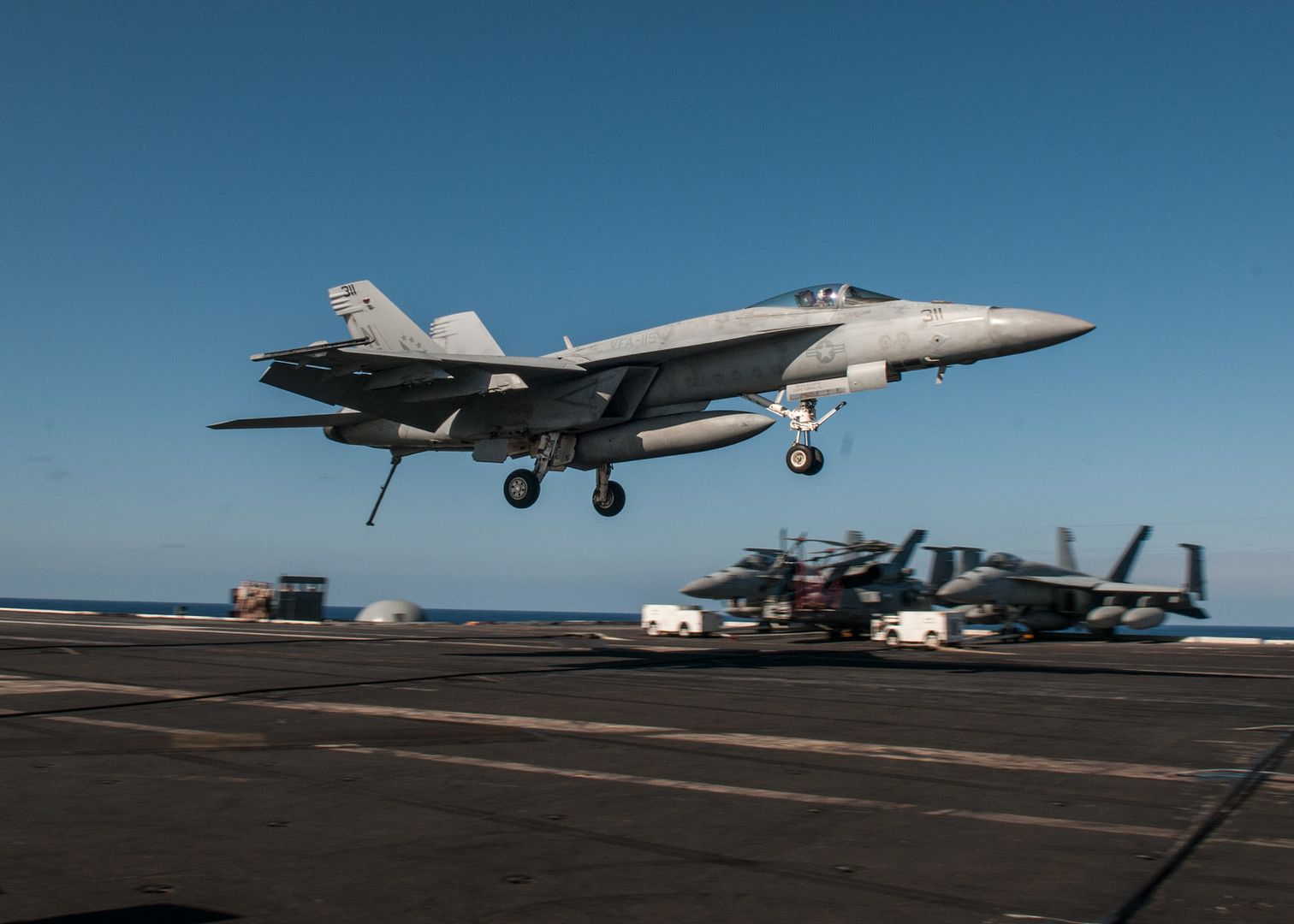
Typhoons piloted and supported by II(AC) Squadron from RAF Lossiemouth on Exercise Invincible Shield in the Republic of Korea.
Note the pilots name.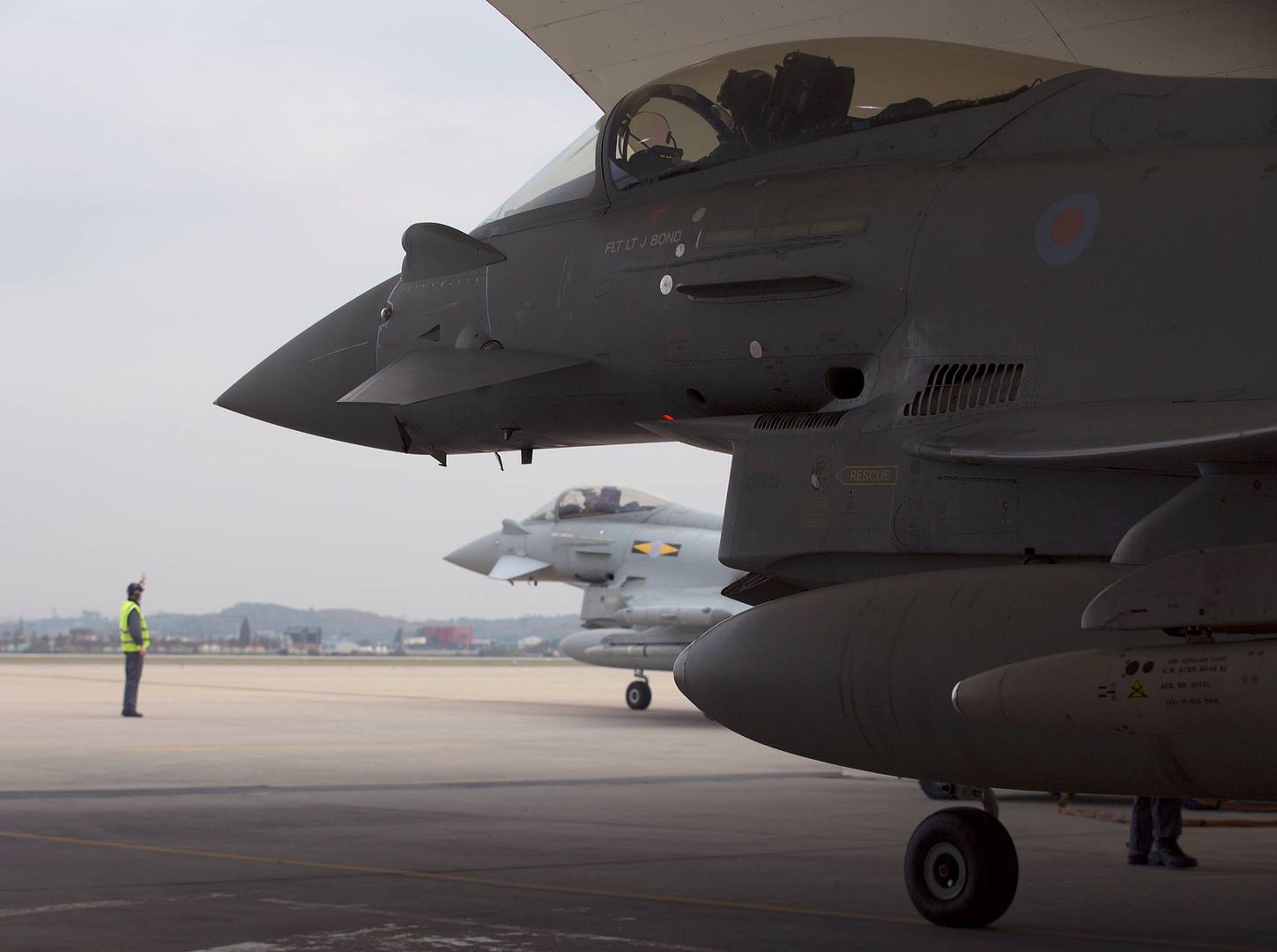
Post a reply
- Go to Next topic
- Go to Welcome
- Go to Introduce Yourself
- Go to General Discussion
- Go to Screenshots, Images and Videos
- Go to Off topic
- Go to Works in Progress
- Go to Skinning Tips / Tutorials
- Go to Skin Requests
- Go to IJAAF Library
- Go to Luftwaffe Library
- Go to RAF Library
- Go to USAAF / USN Library
- Go to Misc Library
- Go to The Ops Room
- Go to Made in Germany
- Go to Campaigns and Missions
- Go to Works in Progress
- Go to Juri's Air-Raid Shelter
- Go to Campaigns and Missions
- Go to Works in Progress
- Go to Skinpacks
- Go to External Projects Discussion
- Go to Books & Resources
